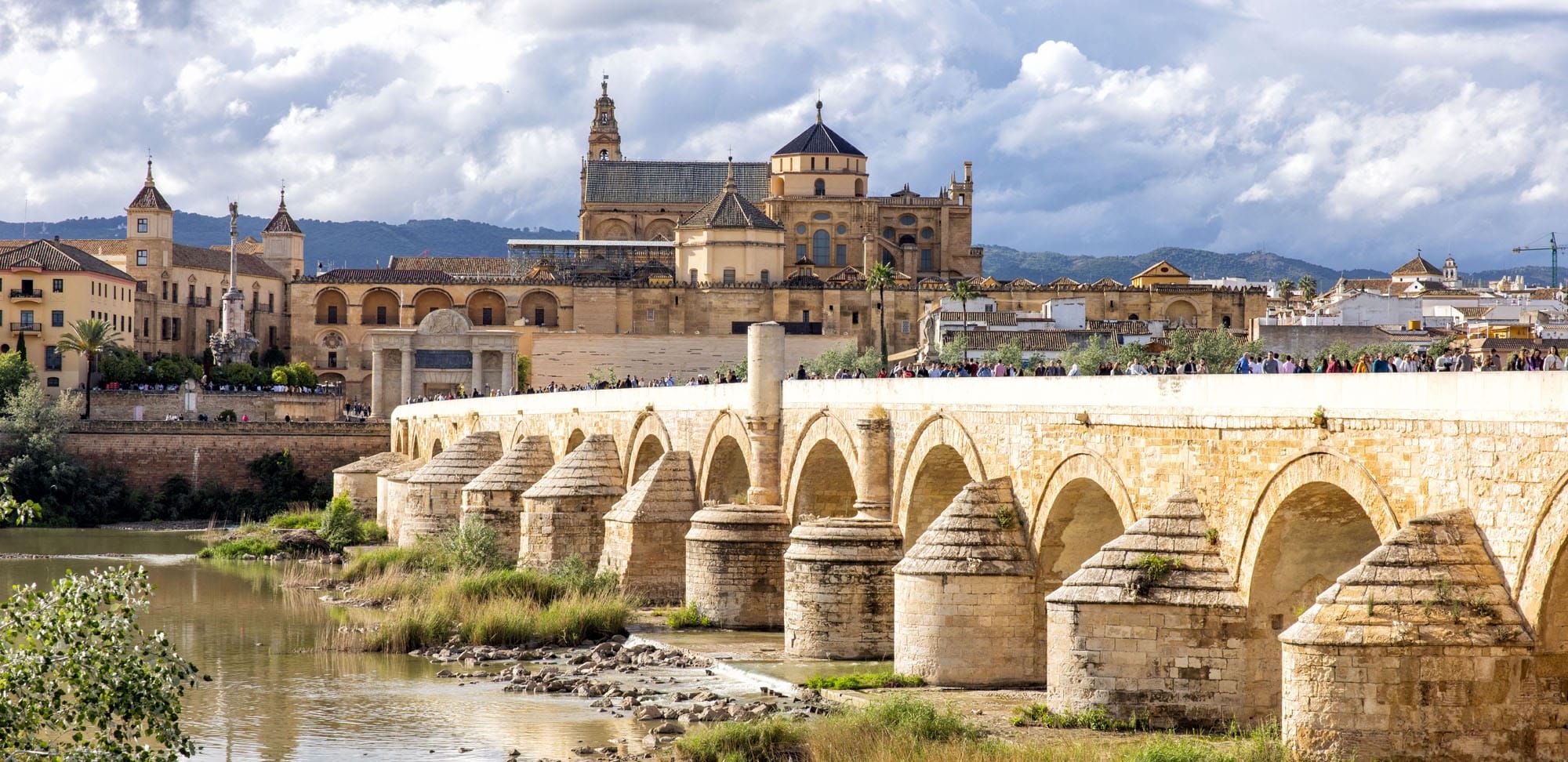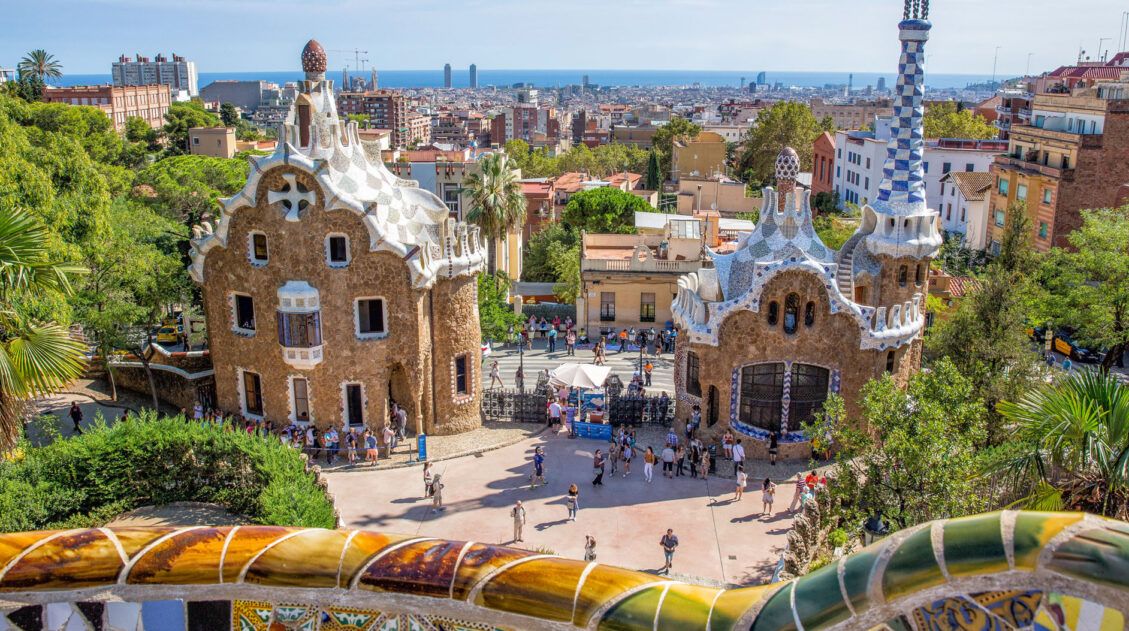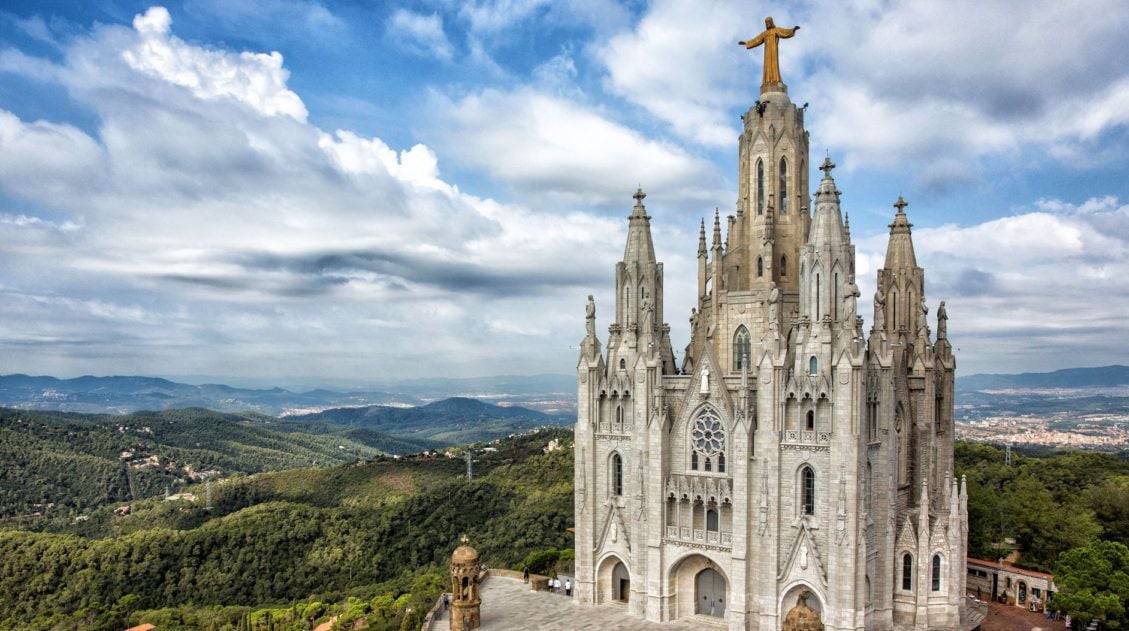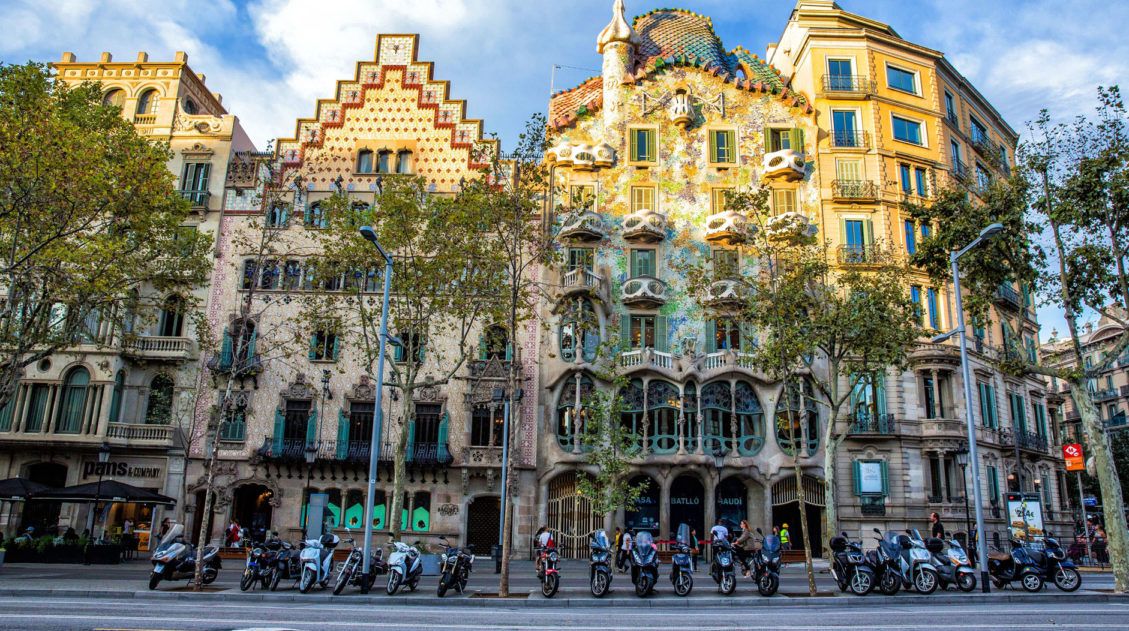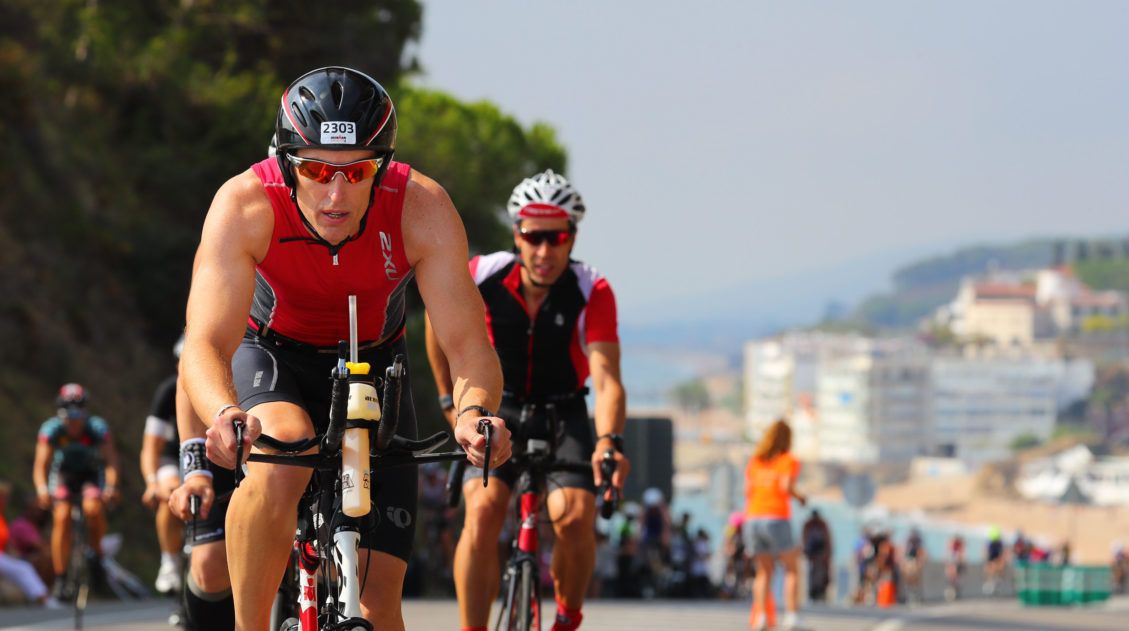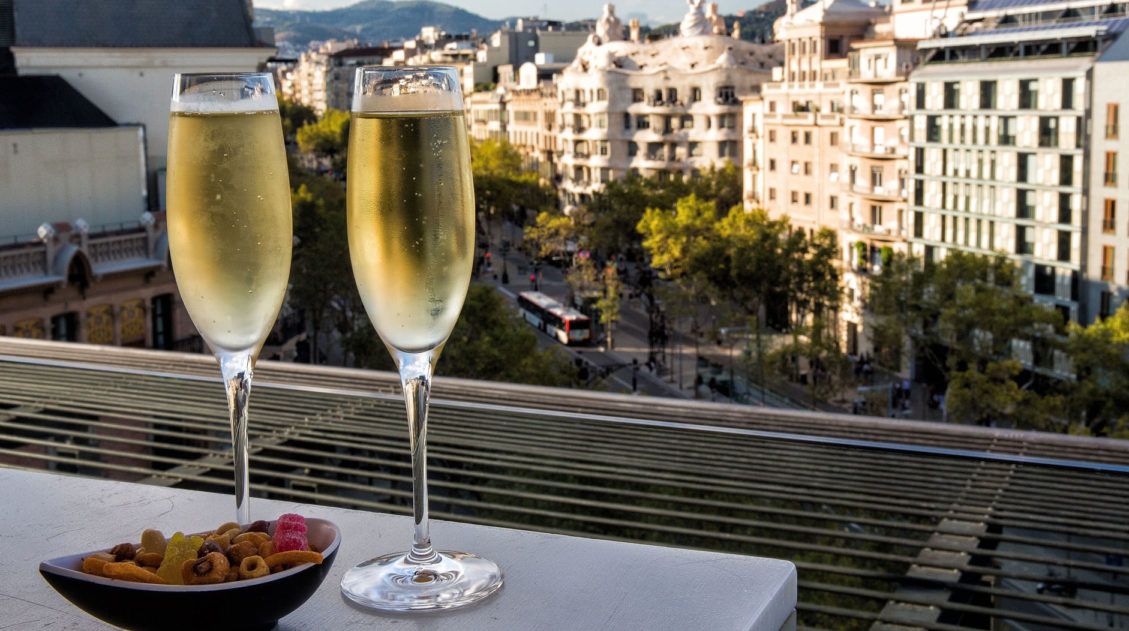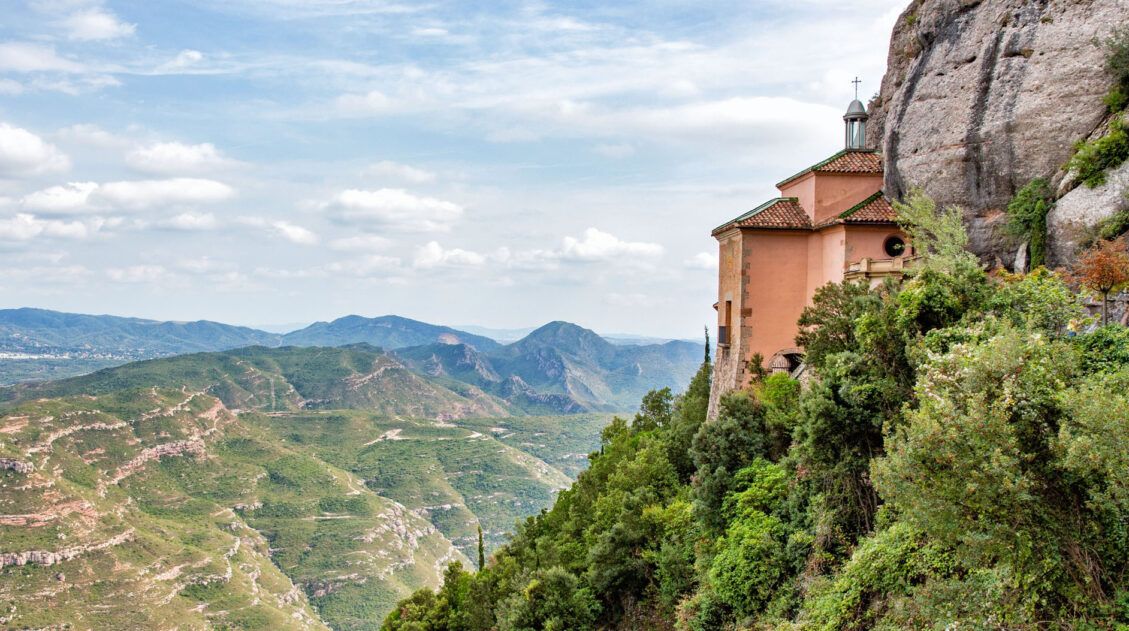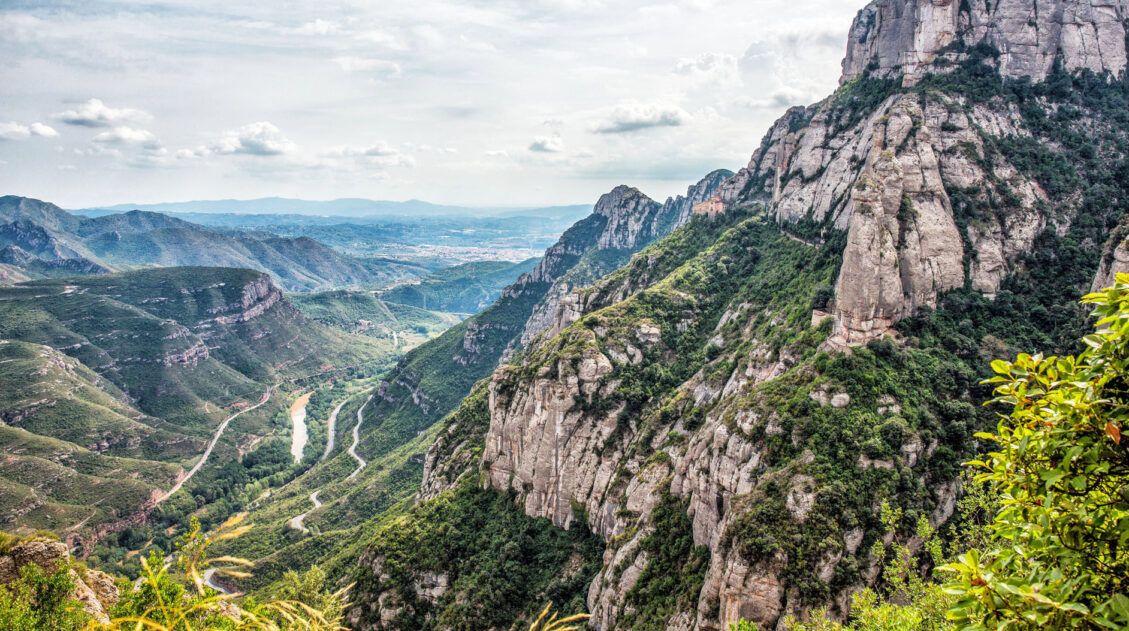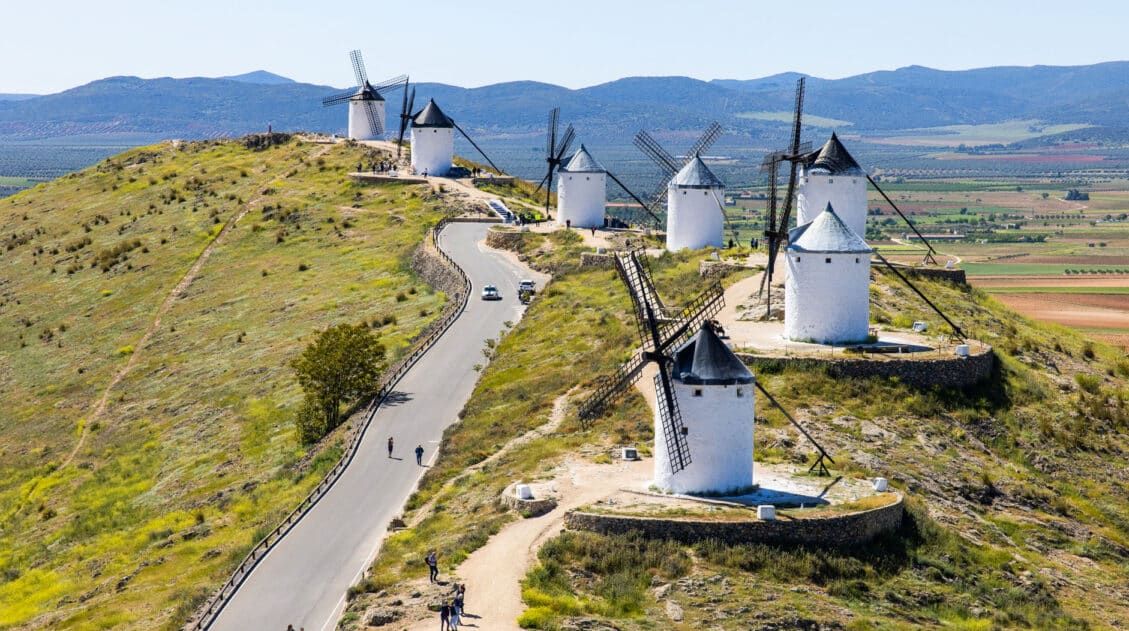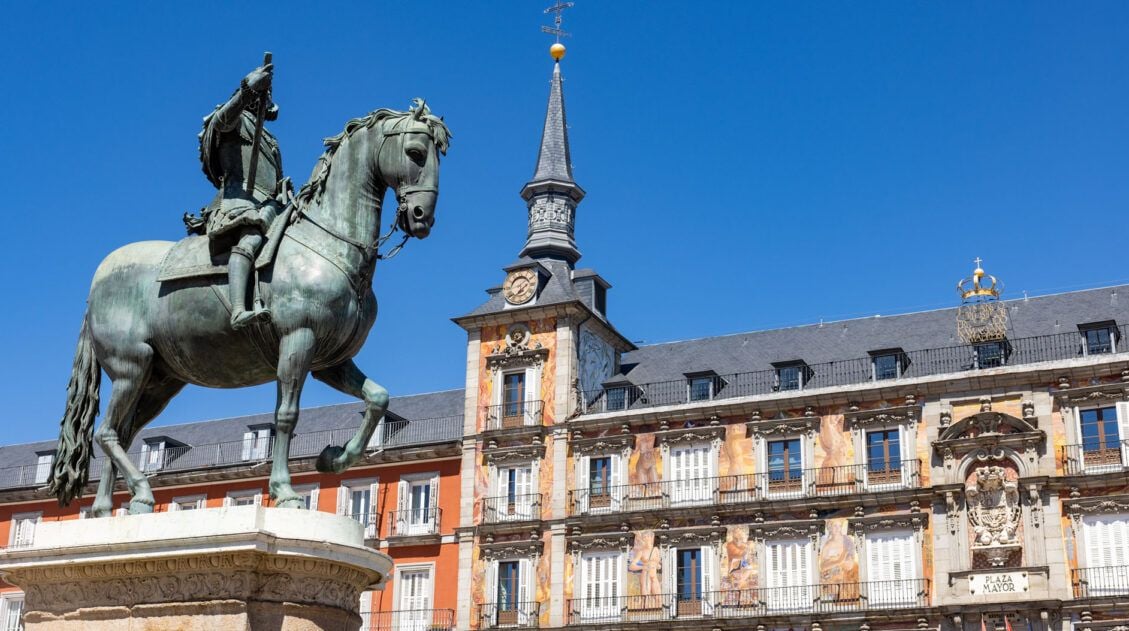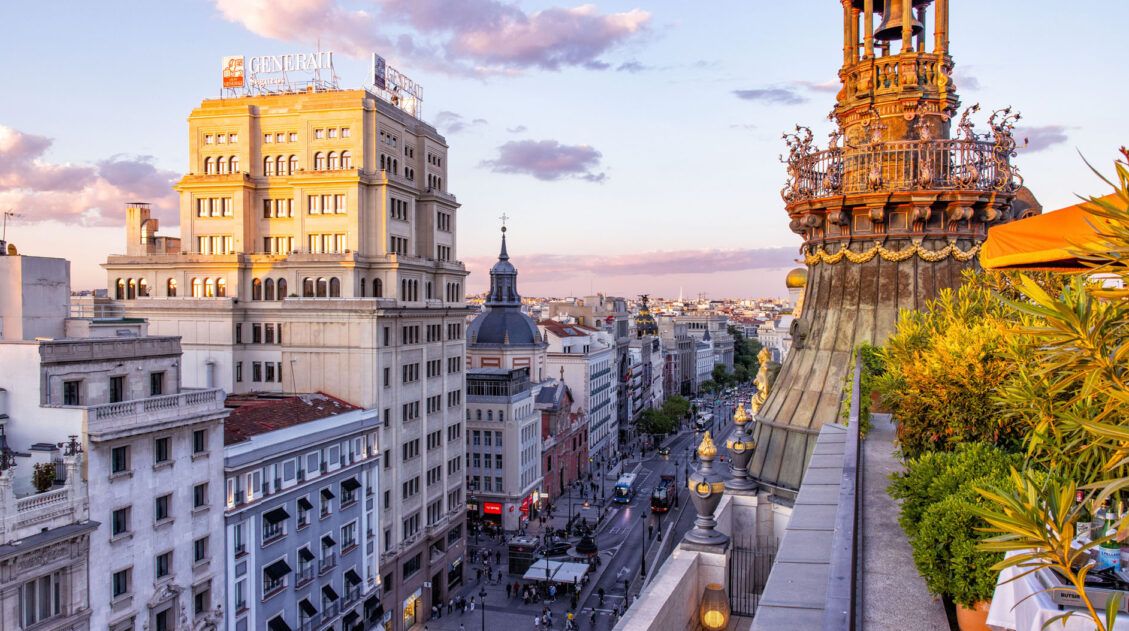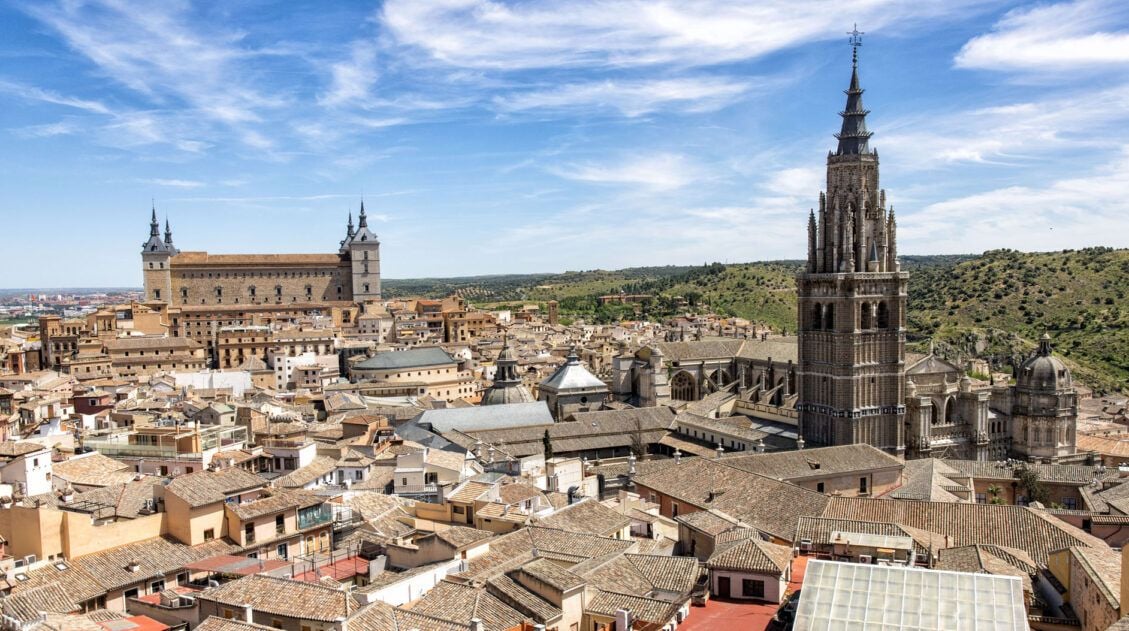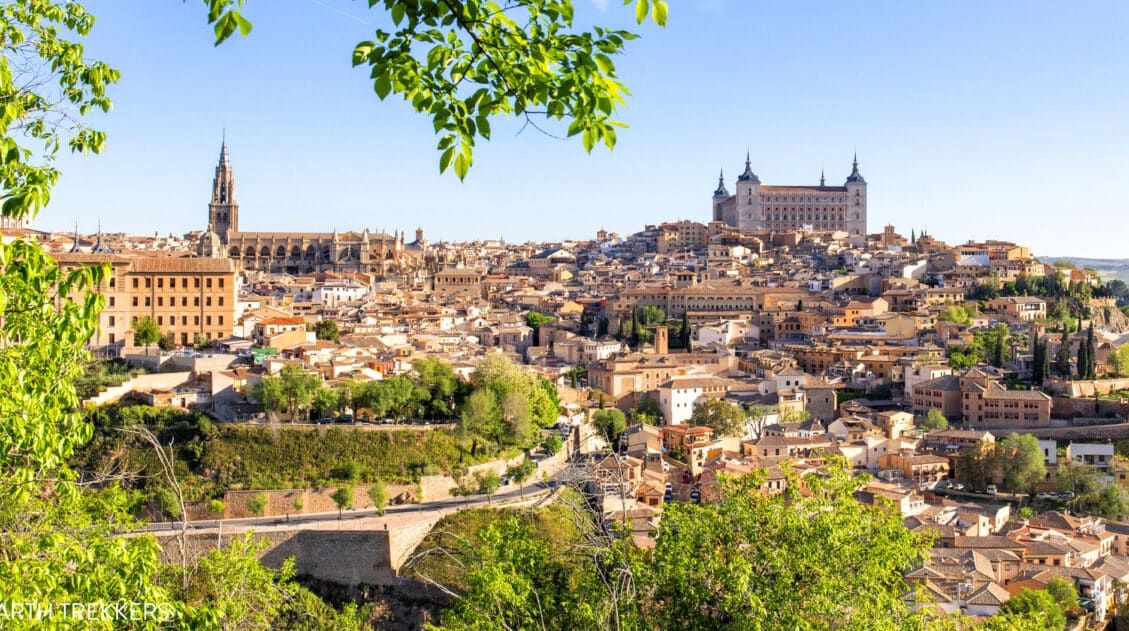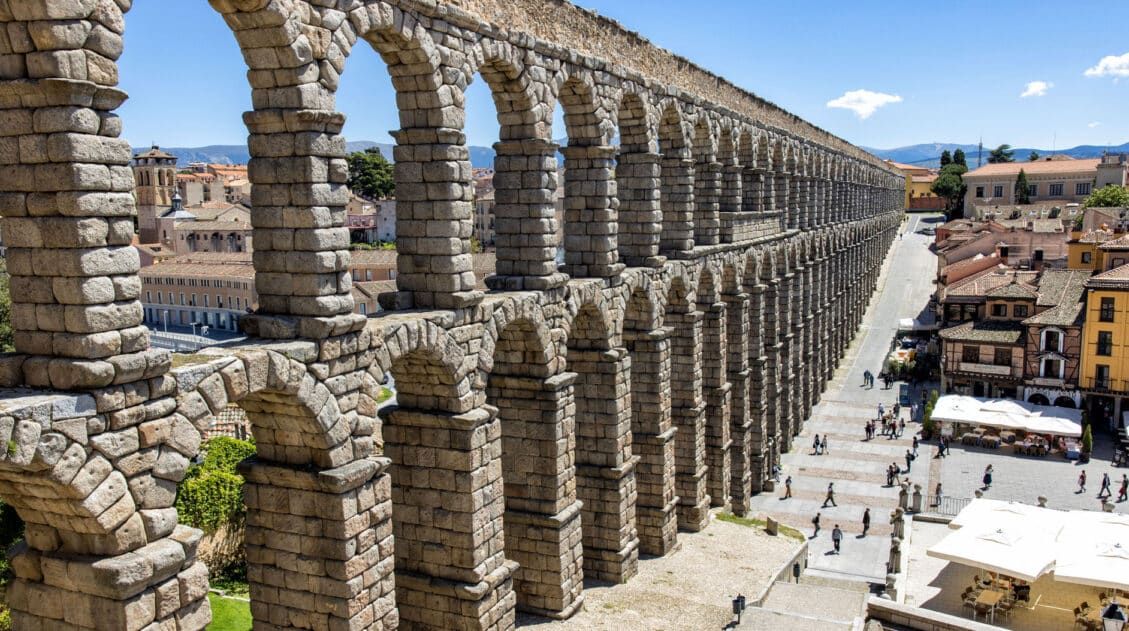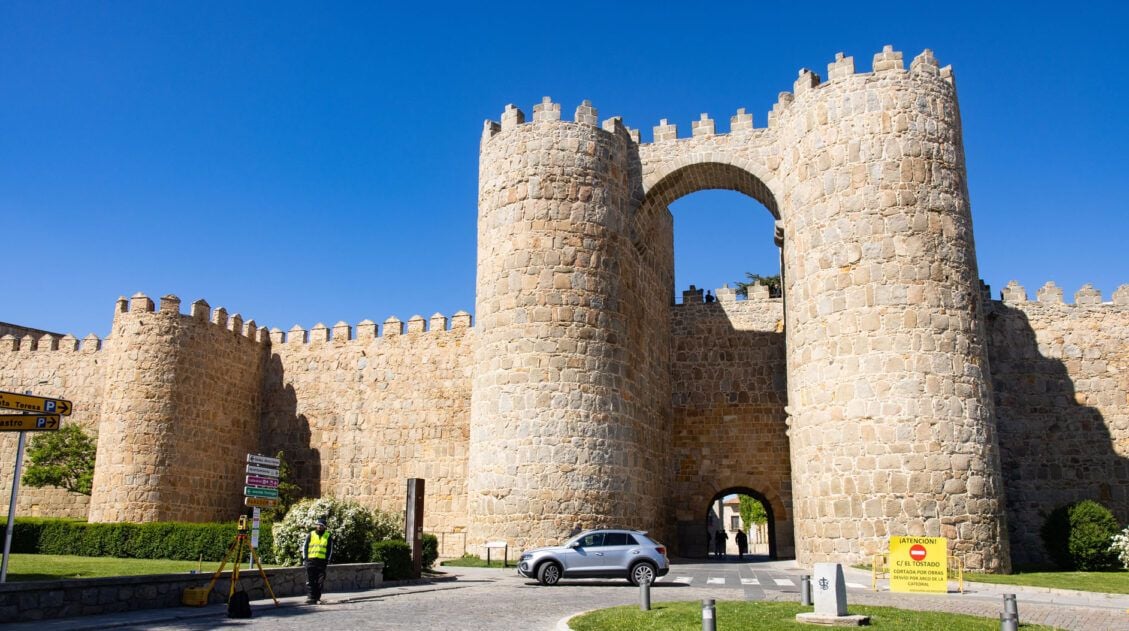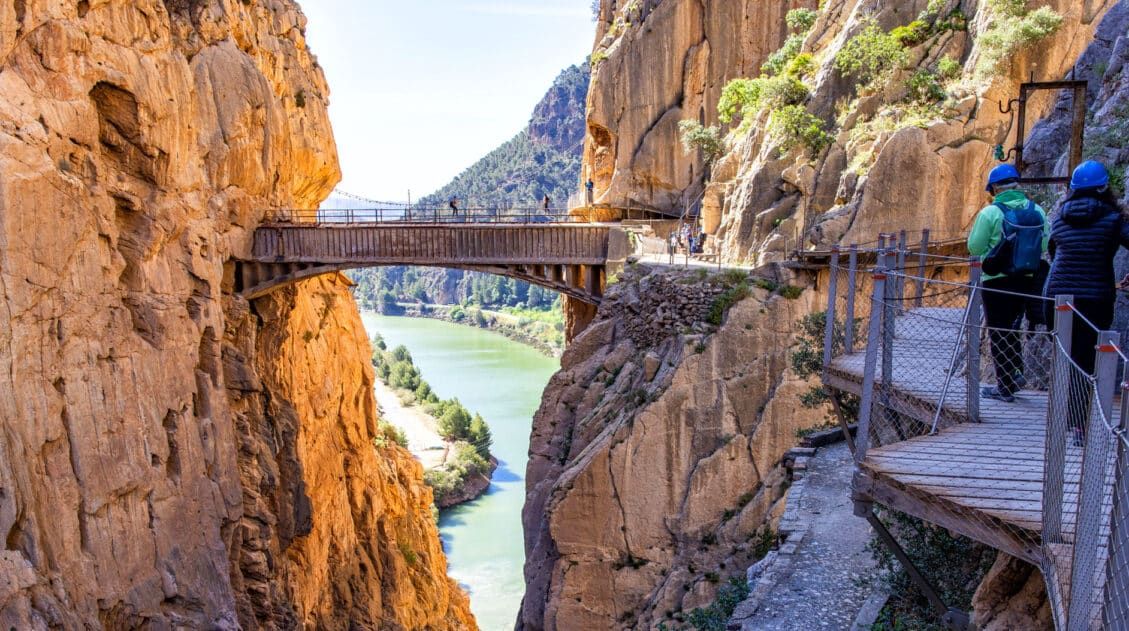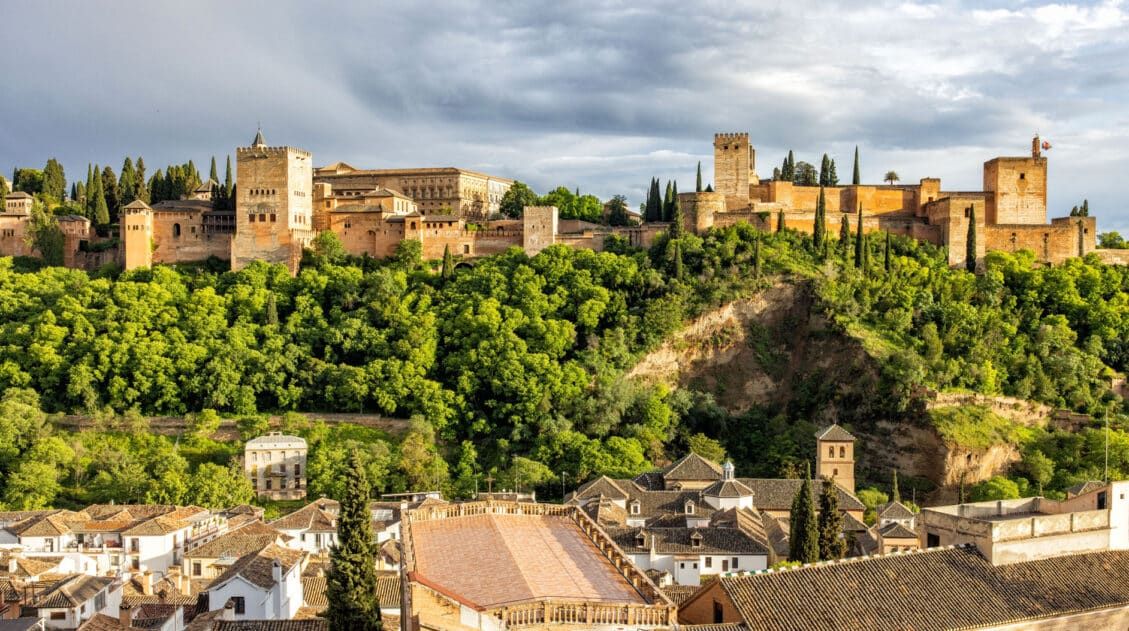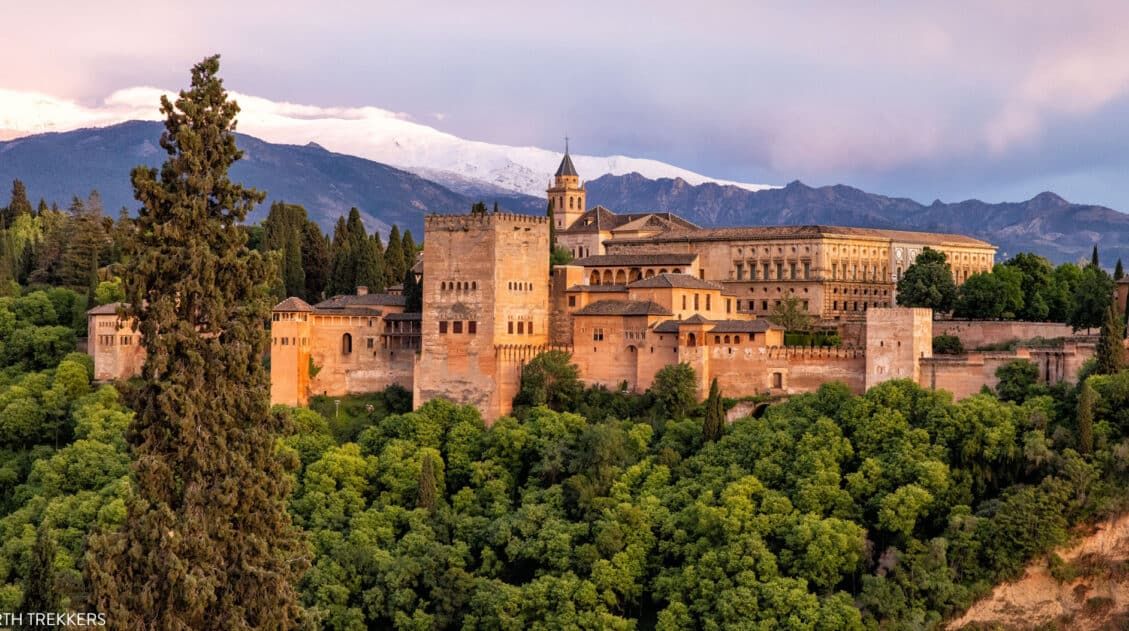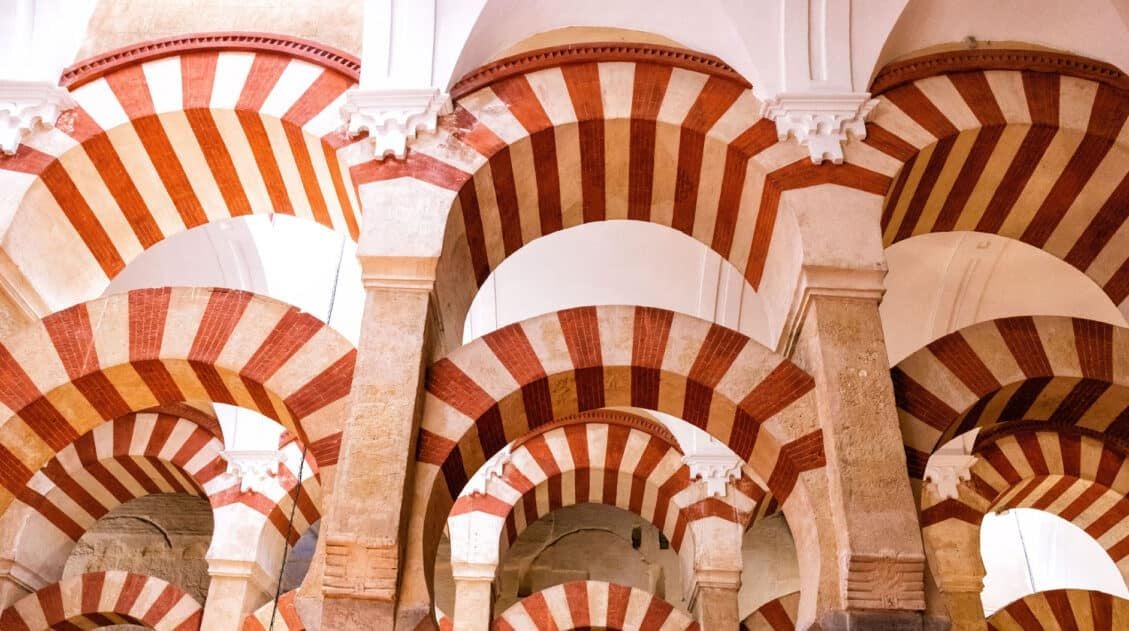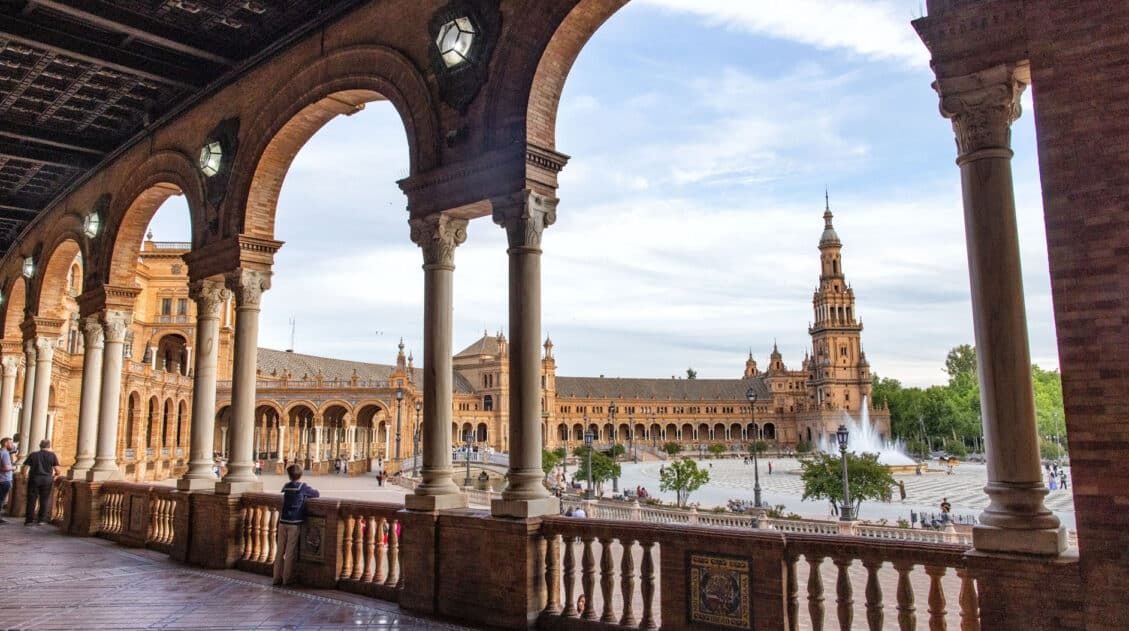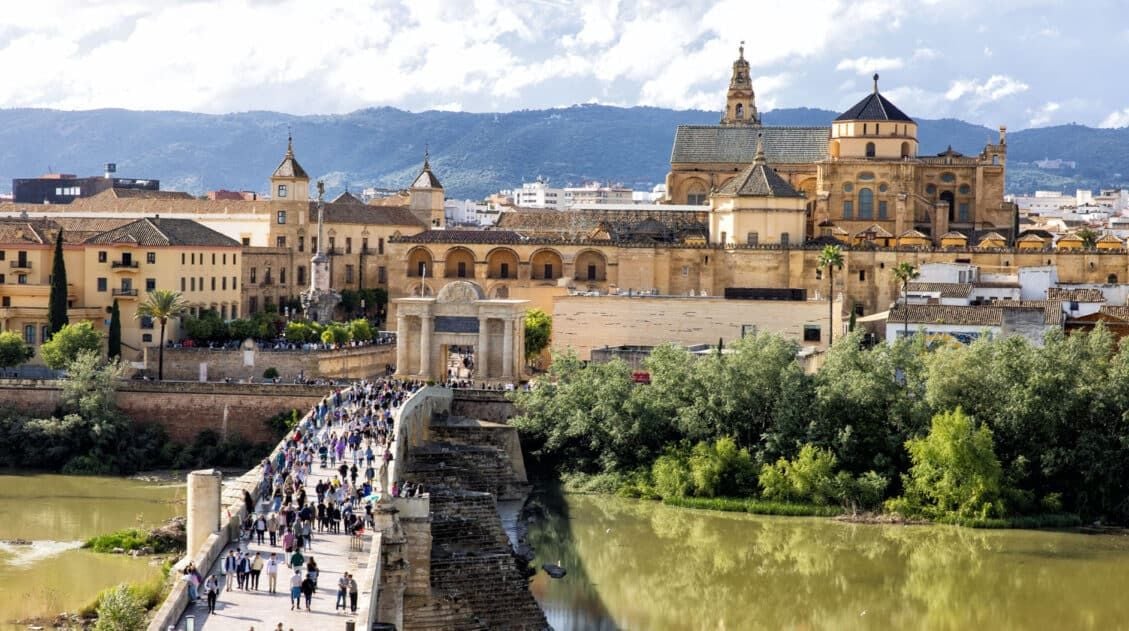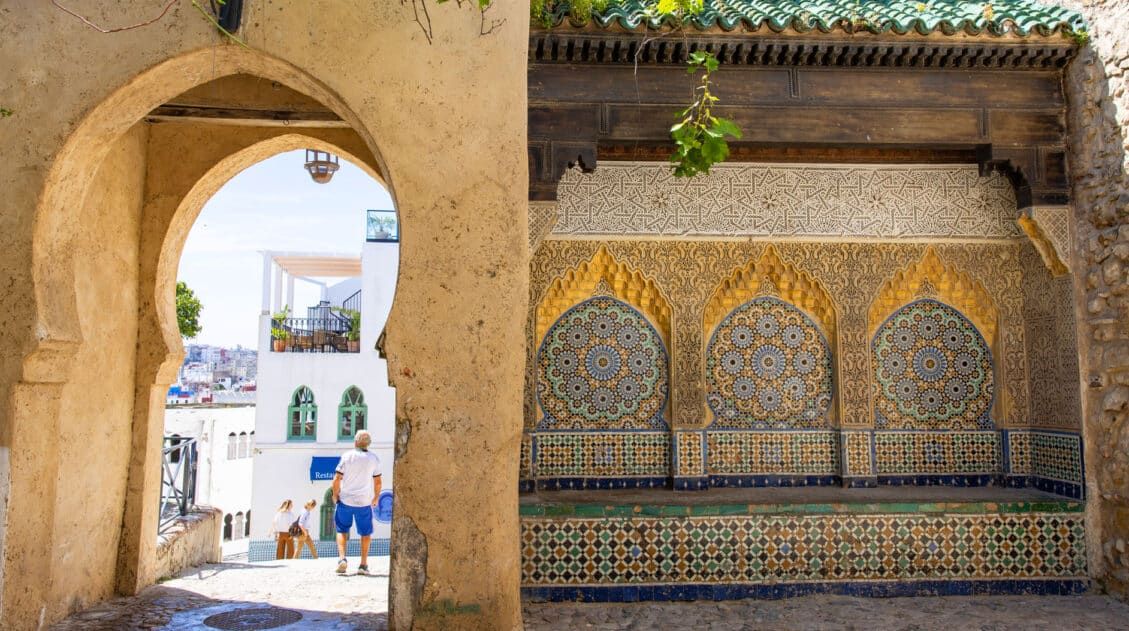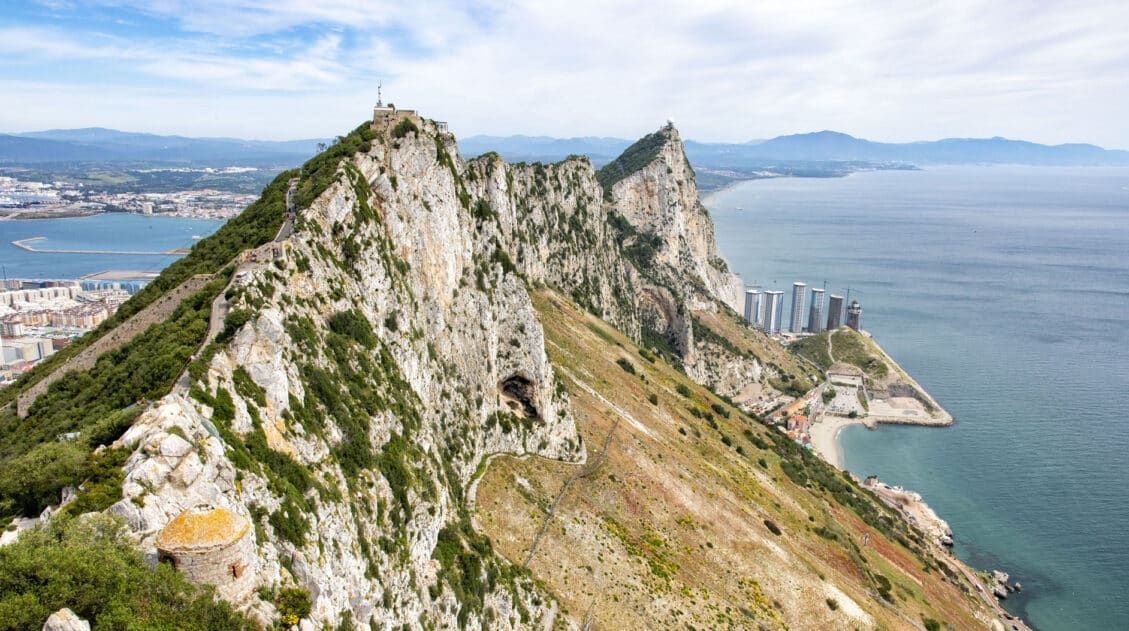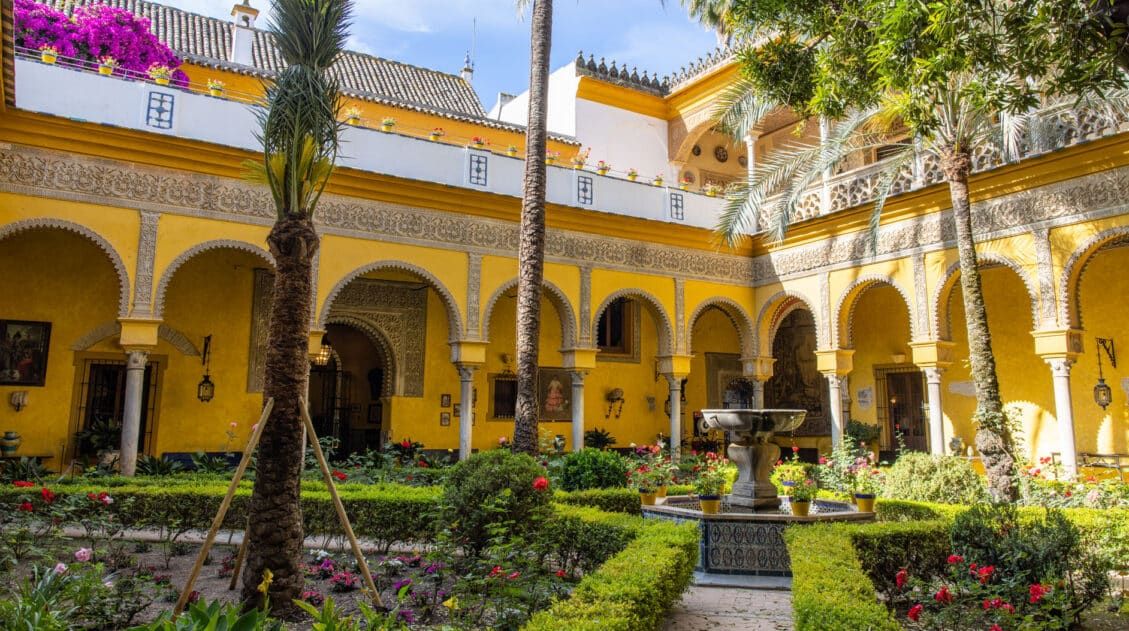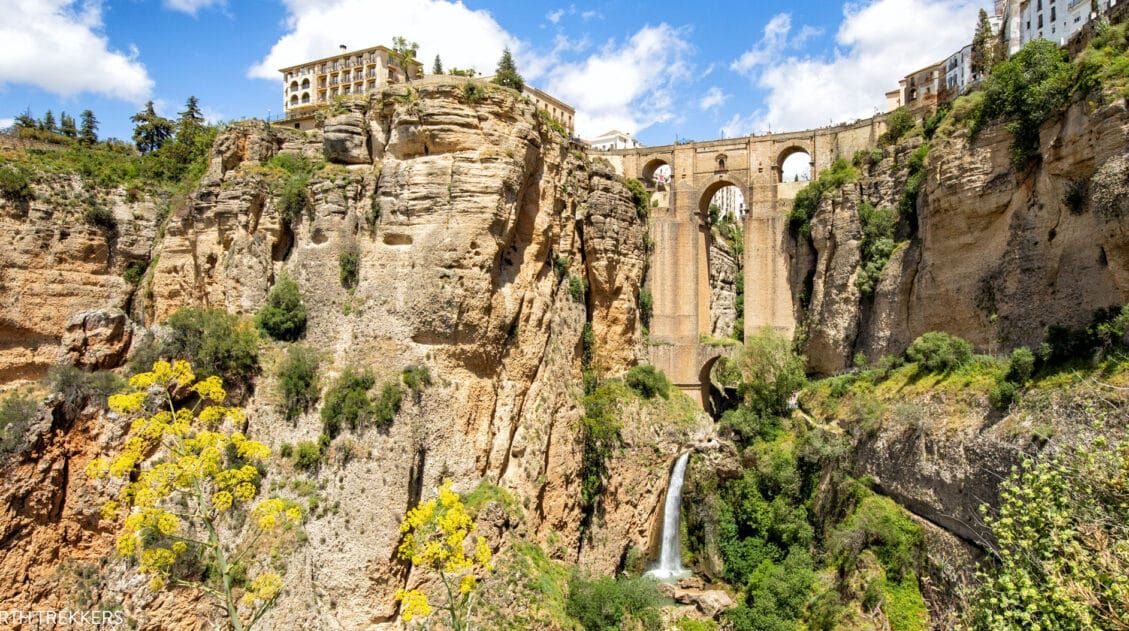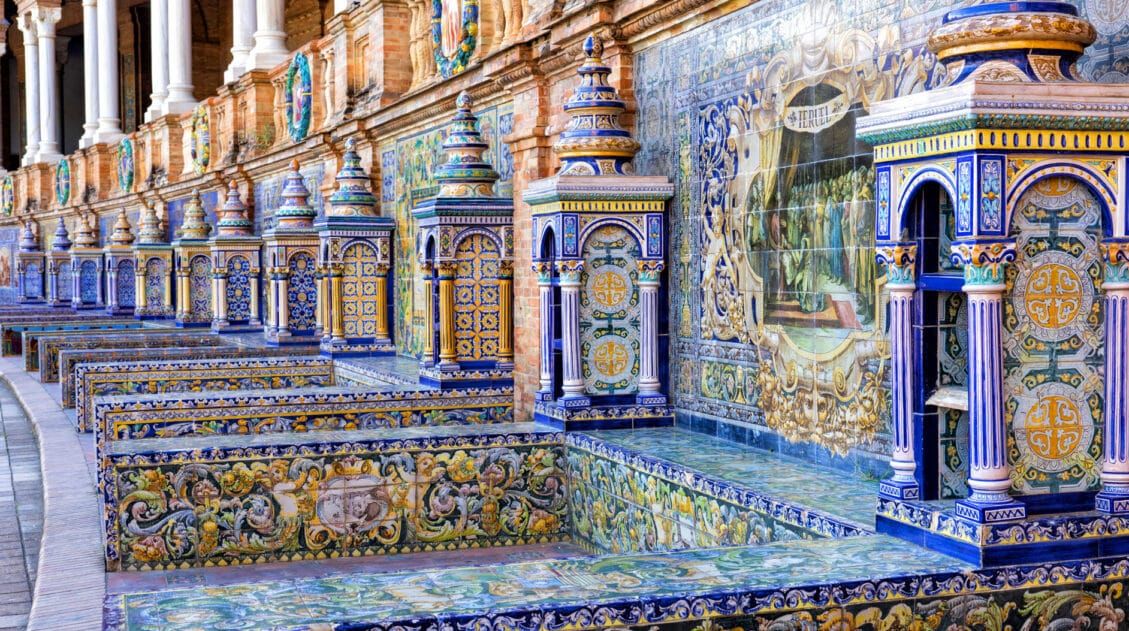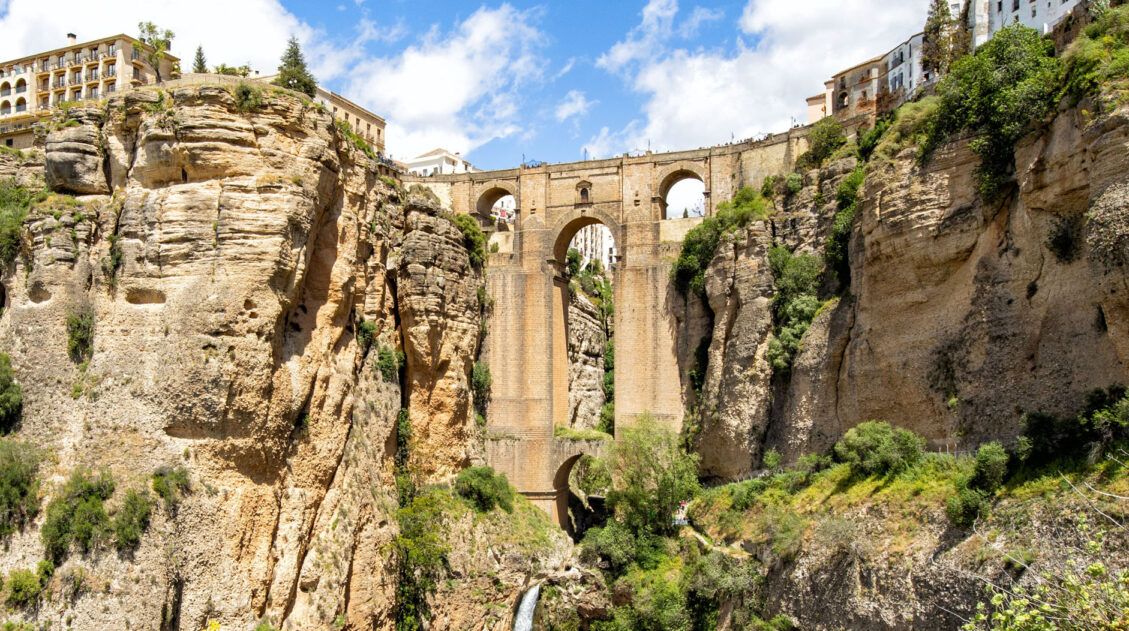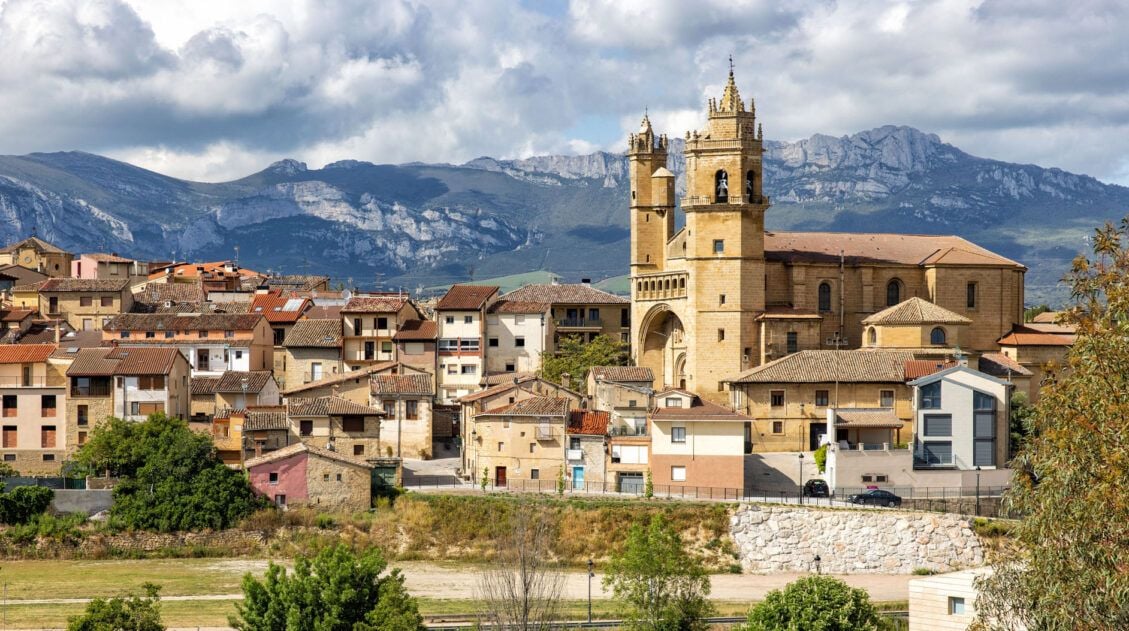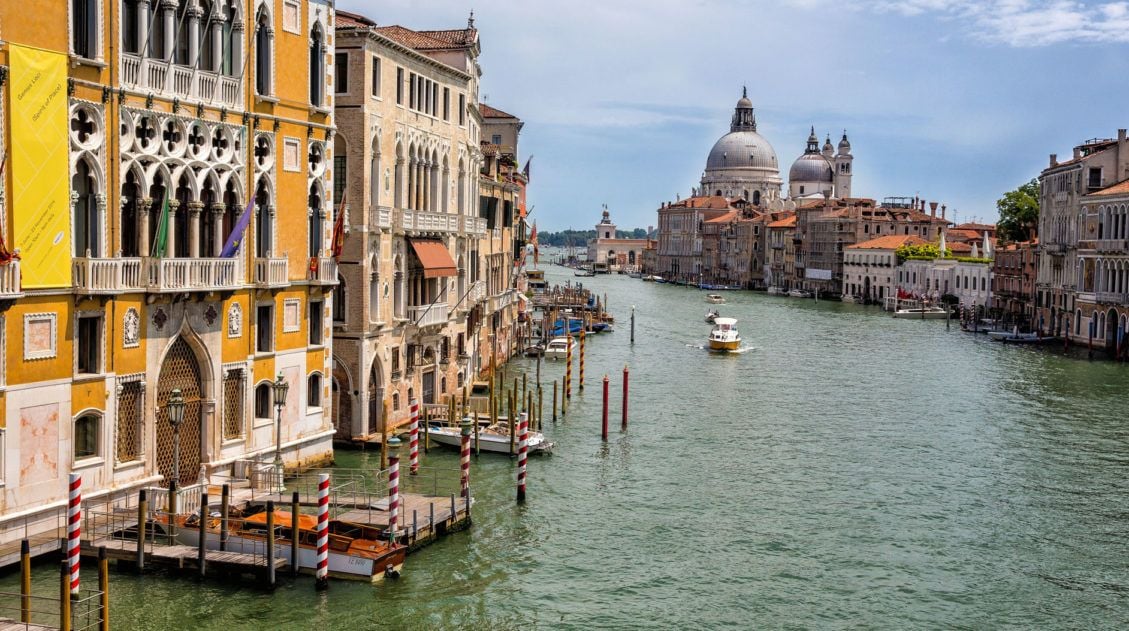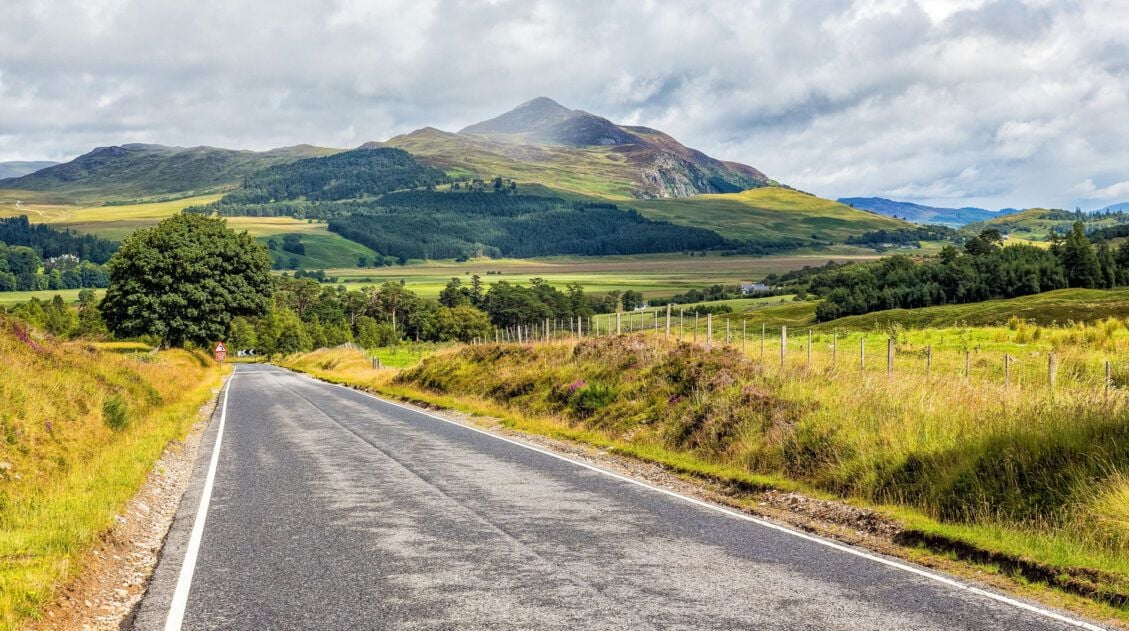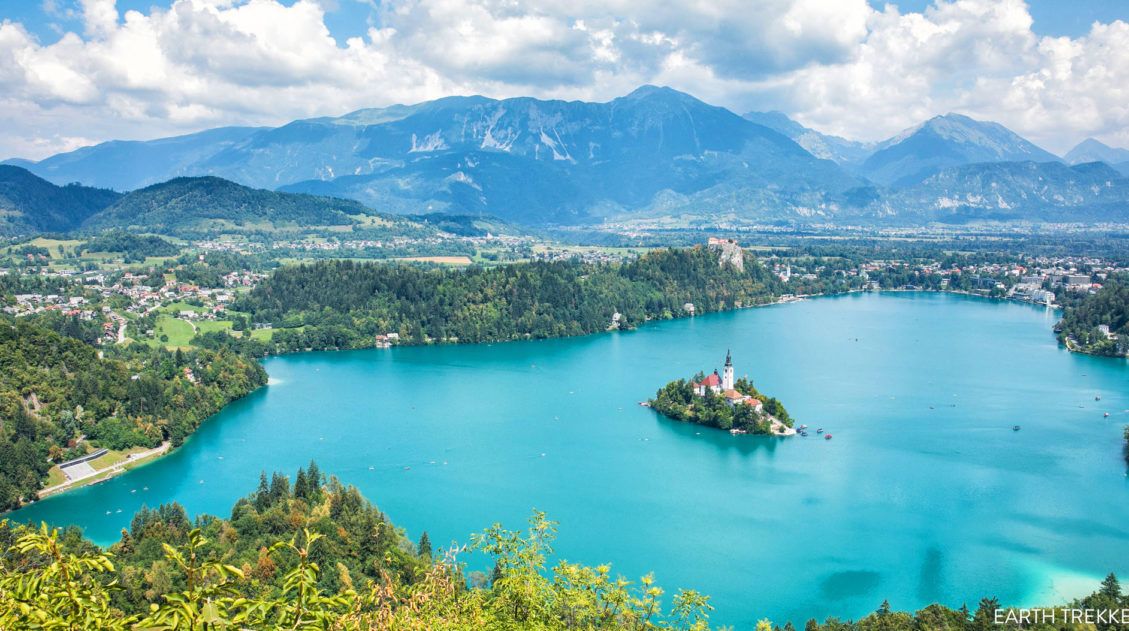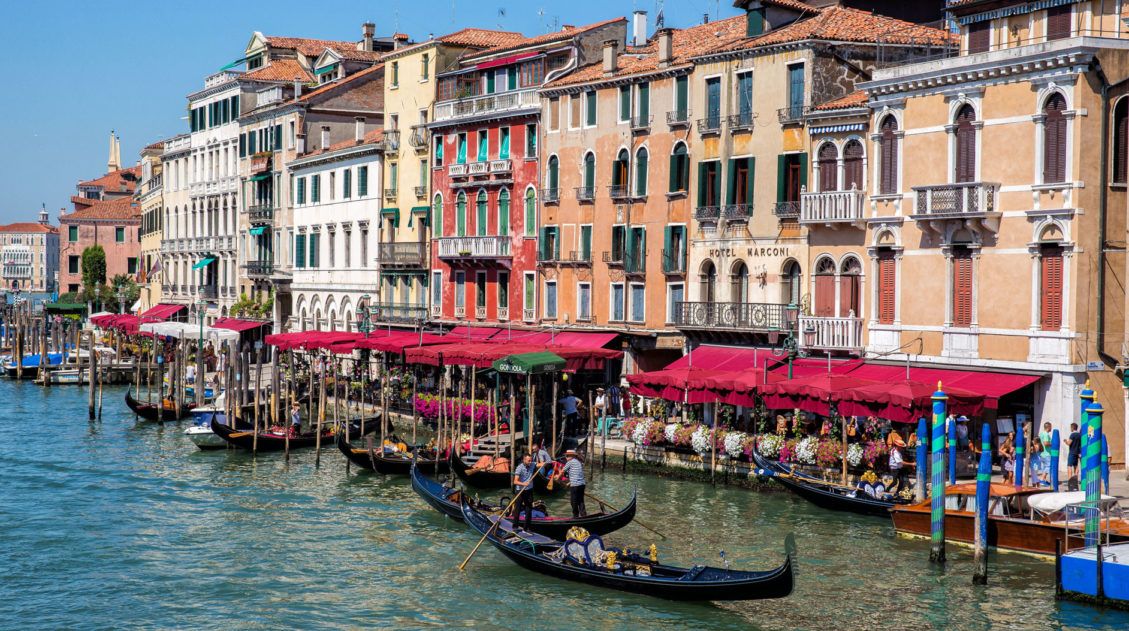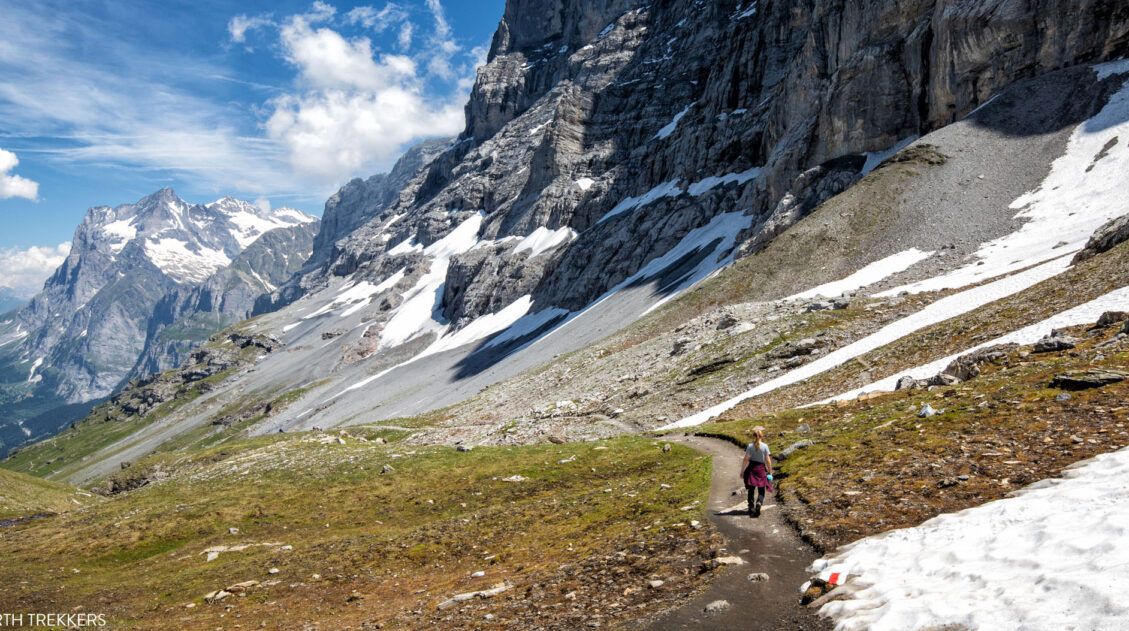Spain Travel Guide
Beautiful Spain… a paradise of sunny skies, azure oceans, historical old towns, grand cathedrals, delicious tapas bars, and authentic dances. Travel across Spain’s cities where each one brims with its own unique history and festive attitude. Or trek across the country on the Camino de Santiago to admire Spain’s beautiful countryside. No matter your travel style, Spain is a place for foodies, history lovers, romantics, and night owls alike.
Spain Itineraries
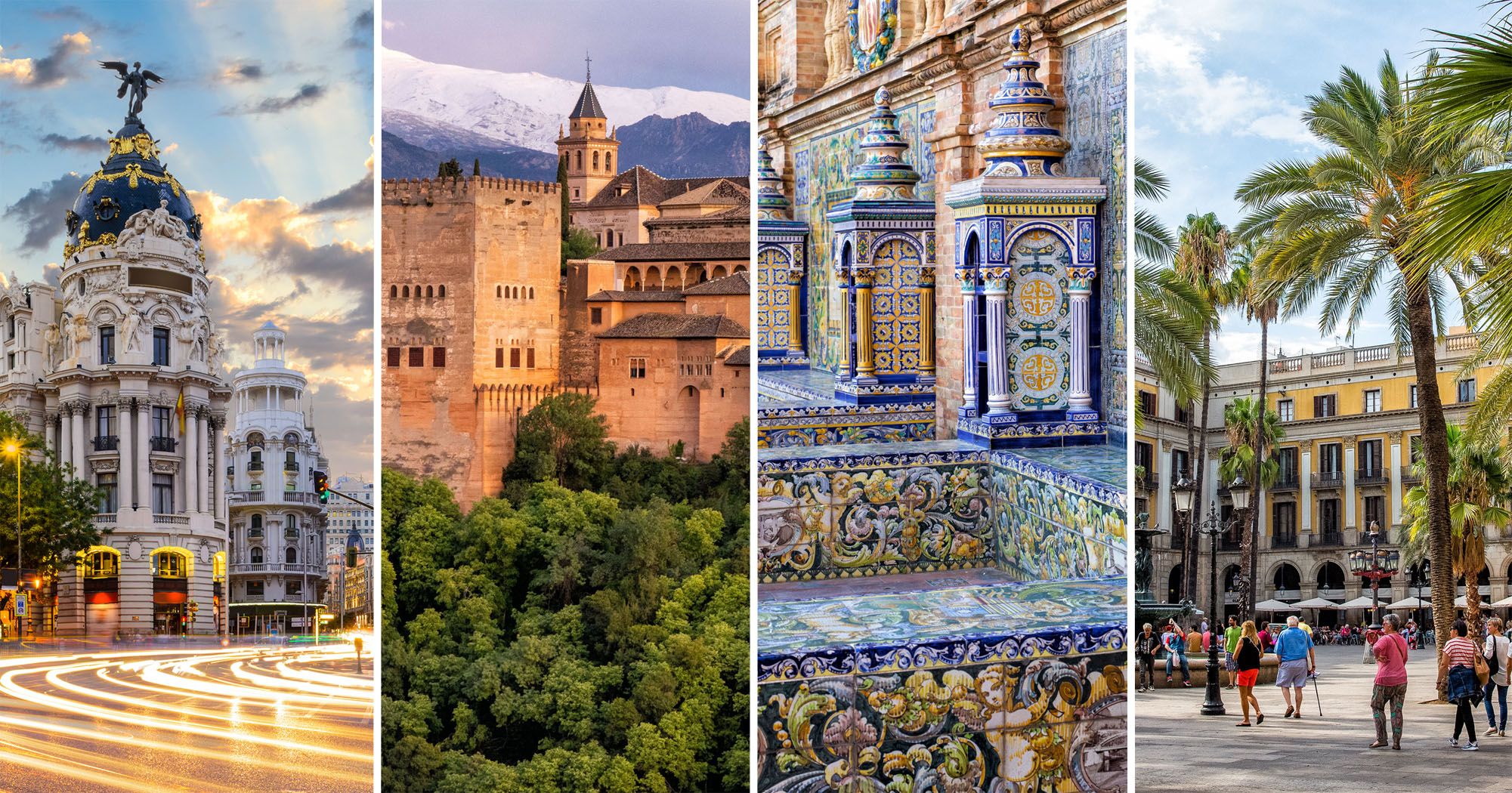
Two Weeks in Spain: Madrid, Barcelona, Seville & Granada (By Train)
With two weeks in Spain, visit Madrid and Barcelona, plus spend some time in southern Spain, visiting Seville, Córdoba, and Granada. This itinerary is done by train, so no need to rent a car.
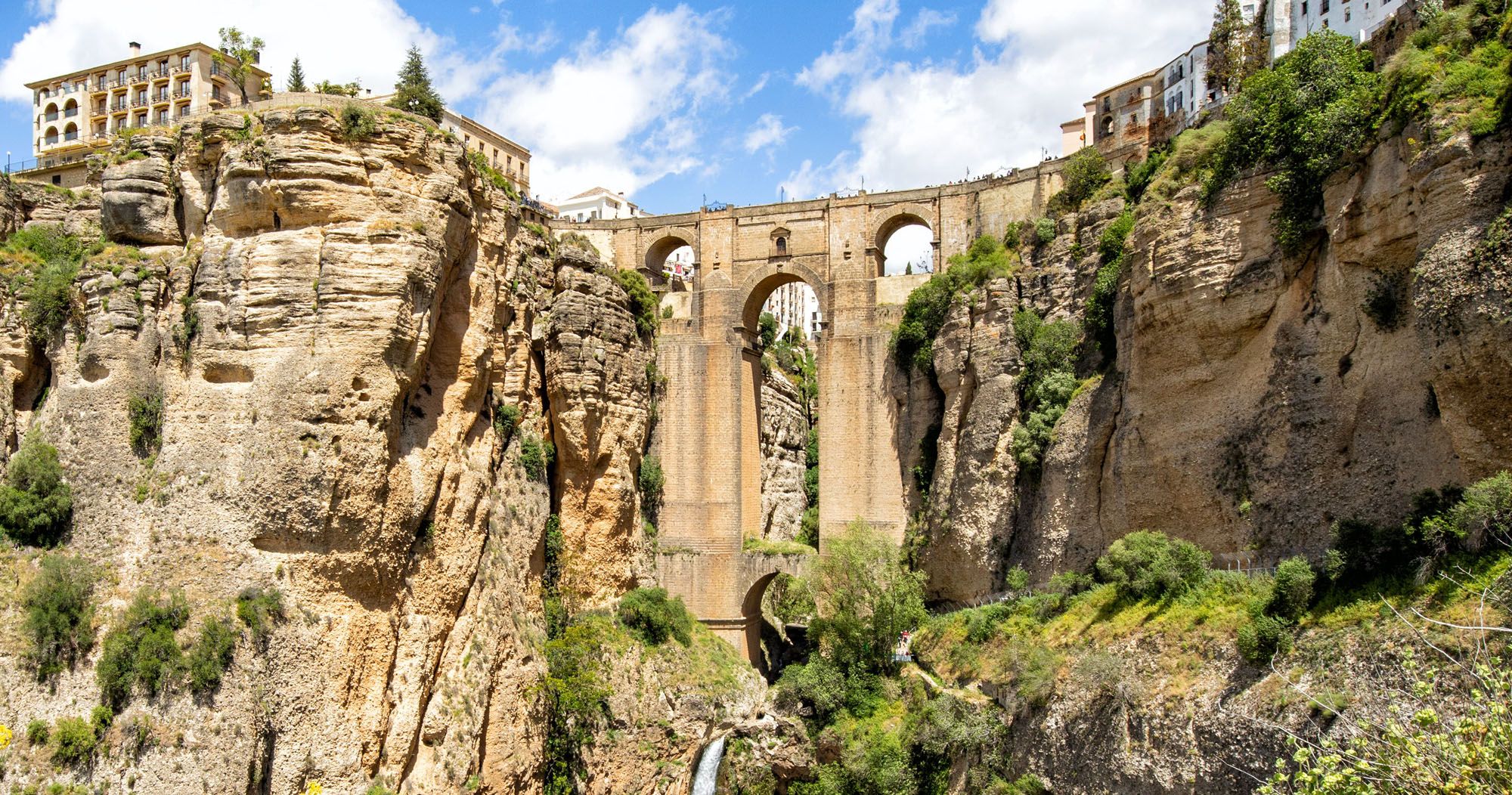
10 to 14 Day Andalusia Itinerary: The Ultimate Southern Spain Road Trip
With 10 days, start in Seville, a small city famous for its cathedral, alcazar, and amazing Plaza de España. From Seville, travel east to Córdoba, tour the Alhambra in Granada, and spend a day in Ronda. If you have 14 days, add on Tarifa, Gibraltar, and a day trip to Tangier, Morocco. This Andalusia Itinerary is done as a loop and can be done by car or public transportation.
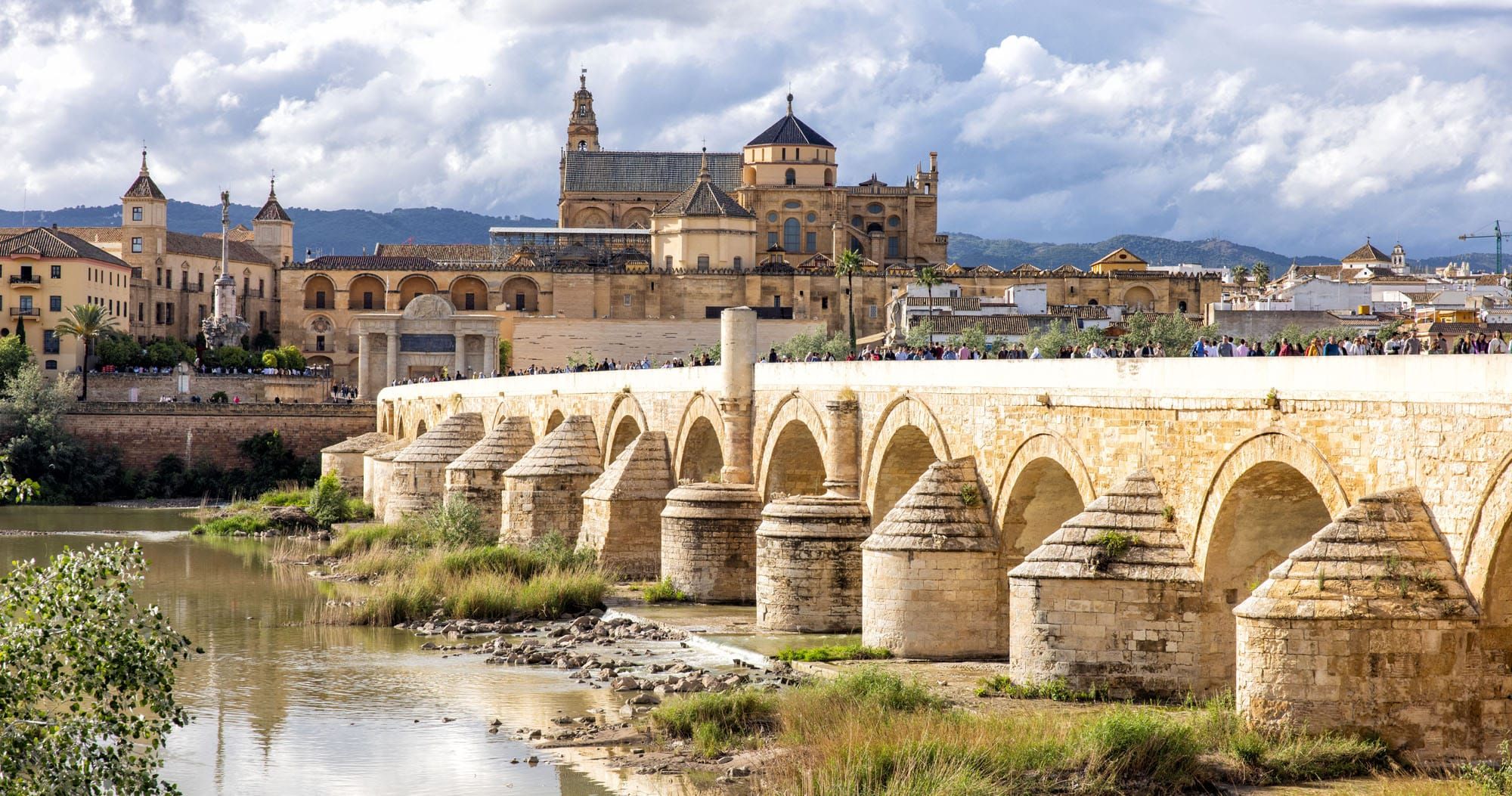
14 Day Southern Spain & Portugal Itinerary: Andalusia & the Algarve
Explore Andalusia, Spain and the Algarve of Portugal. Start in Seville and from here, tour a few famous Andalusian cities, visiting the Mosque-Cathedral in Córdoba, touring the Alhambra in Granada, and photographing Ronda’s bridges and canyon. End with a few days in the Algarve, Portugal and then complete the loop by returning to Seville.
Catalonia
Catalonia is located on the northeast corner of Spain. Barcelona is the largest city here and the most popular place to visit in the region. However, Barcelona makes a great home base for day tripping to Girona, Montserrat, Tarragona, and Costa Brava.
Barcelona
3 Days in Barcelona: How to Plan an Amazing Trip to Barcelona
With 3 days in Barcelona, you can visit the icons of this city…Gaudí’s masterpieces (the Sagrada Familia, Casa Batlló, Casa Mila, and Park Güell), stroll through the Gothic Quarter, dine on tapas, go to the beach, and watch the sunset from a rooftop bar. We put together this 3 day Barcelona itinerary to help you […]
Barcelona Bucket List: 25 Best Things to Do in Barcelona
Barcelona, Spain…this is a city that deserves to be on every traveler’s must-see list. Why? Barcelona is a beautiful city. Think Rome meets Paris. This city is spotless, with wide streets, beautiful architecture, beaches, palm trees, cafés, and boutique shopping. Throw in some tapas, Gaudí, and cava, and you have yourself a fabulous destination just […]
Best Places to Stay in Barcelona: Complete Guide for First Time Visitors
If you are trying to decide where to stay in Barcelona, it can feel like an overwhelming decision. Barcelona is a large city with hundreds of hotels to choose from. To make things easier for you, we have narrowed down the long list of options into just a few great properties, organized by neighborhood and […]
Racing Ironman Barcelona
Tim and I have been competing in triathlon races for years. The farthest we ventured from home was Florida, competing in Ironman Florida in 2009 (Julie) and 2010 (Tim). Both of us have dreamed about racing in Europe. But it seems so far to travel, just for a triathlon. In the summer of 2015, Tim expressed […]
Tapas! Tapas! Tapas! Restaurants and Rooftop Bars in Barcelona
While in Barcelona, there is a lot to see and do. Of course, you must visit the Sagrada Familia, walk through the Gothic Quarter, and stroll down La Rambla. But dining is another important part of getting the entire “Barcelona” experience. Tapas, vermouth, and cava are the rage here. It’s almost impossible to walk down […]
Montserrat
Montserrat Day Trip: How to Visit Montserrat from Barcelona
Visiting Montserrat is one of the most popular day trips from Barcelona. It’s easy to get to and gives you an opportunity to see the Spanish countryside. The views from the monastery are breathtaking, well worth a day of your time while you are in Barcelona. What is Montserrat? Montserrat is a rocky mountain range […]
Exactly How to Hike to Montserrat | Catalonia, Spain
A visit to Montserrat is one of the most popular day trips from Barcelona. Many people come here to view this unique, jagged, sawtooth mountain range and its views over the stunning countryside. Montserrat truly is a beautiful place to visit. One of the best ways to get to the top are on your own […]
Girona
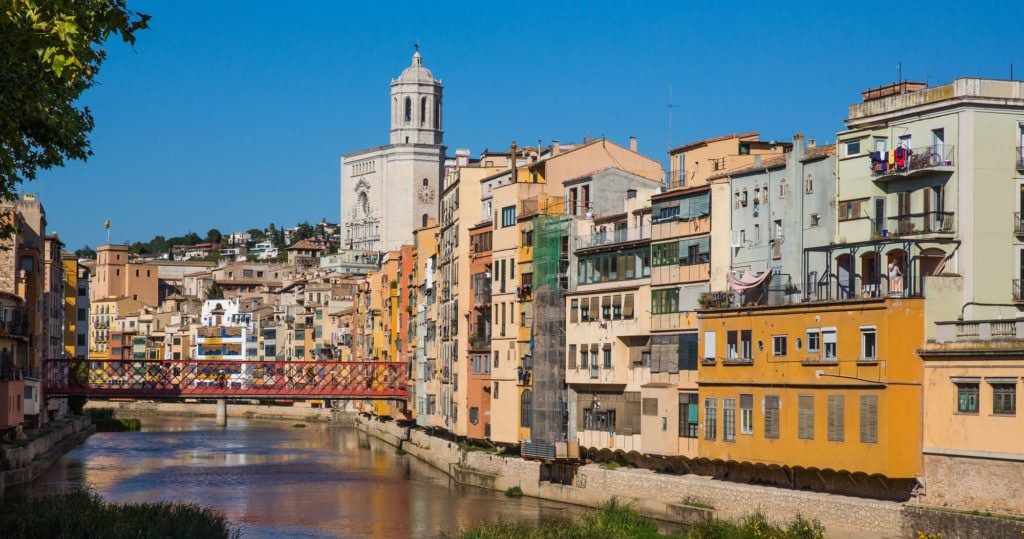
9 Reasons Why You Should Visit Girona, Spain
Girona, located in Catalonia, Spain, sits between Barcelona and Costa Brava. It’s a gorgeous place to visit, with medieval walls, narrow winding city streets, and one of the best preserved Jewish Quarters in Europe. All you need is one day to see the best of Girona, making it a great destination on even the quickest itineraries through Spain.
Madrid
Madrid is the largest city and the capital of Spain. Take a stroll along Gran Vía, visit the long list of art museums, tour the Royal Palace, explore the city’s vibrant food scene, and if you have more than 2 or 3 days, day trip to Toledo, Segovia, or Avila.
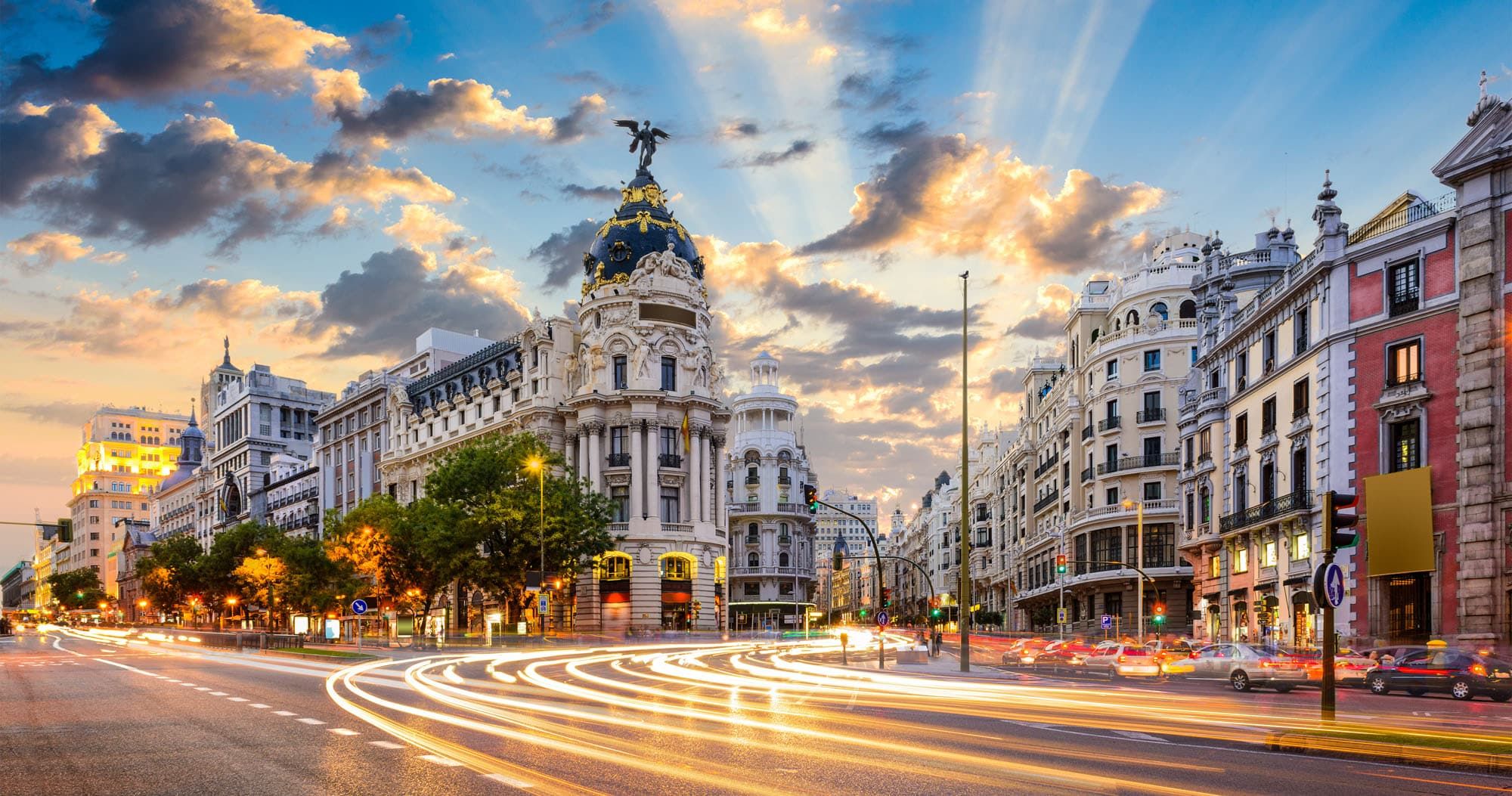
Madrid Bucket List: 35 Amazing Things to Do in Madrid
Madrid is the capital city of Spain and one of the largest cities in Europe. This cosmopolitan city is filled with world-class art museums, ancient historical sites, and grand palaces. Exploring a neighborhood or two, going for a stroll on Gran Vía, and dining on tapas and local cuisine all make it on to the list of best things to do in Madrid.
Top 10 Day Trips from Madrid (+ Exactly How to Plan Them)
One of the best things to do in Madrid is to use the city as a home base for exploring nearby destinations. And there are a handful of incredibly cool places to go. Walk the fortified walls at Ávila, see the amazing Roman aqueduct in Segovia, explore the cobblestoned streets in Toledo, tour a historic […]
One Perfect Day in Madrid: Best of Madrid in 24 Hours
Madrid is famous for its art museums, cosmopolitan vibe, restaurants, and rooftop bars. If you only have one day in Madrid, there is plenty here to keep you busy. With a well-planned day, you can visit Madrid’s must-see sights, including the Prado National Museum and the Royal Palace, plus tour a famous market, enjoy the […]
2 Days in Madrid: Best of Madrid for First Time Visitors
Visit the Prado National Museum, go for a stroll along Gran Vía, tour the Royal Palace, hop from tapas restaurant to tapas restaurant in Barrio de la Latina, enjoy the view from a rooftop bar (or two!), and explore the picturesque city center. If you have 2 days in Madrid, this itinerary includes the city’s […]
How to Plan the Perfect Madrid Itinerary (from 1 to 7 days)
Madrid is the largest city in Spain. There is a lot to do here, from visiting its long list of art museums, exploring the city center, and day tripping to nearby destinations. When it comes to planning your Madrid itinerary, there several things to consider. The first thing is how much time will you have? […]
Castilla – La Mancha
Castilla – La Mancha is a community that makes up a large portion of central Spain. It sits just to the south of Madrid and is home to Toledo, the first capital of Spain.
One Perfect Day in Toledo: Day Trip from Madrid
Located in central Spain, nestled on a bend on the Tagus River, sits the extremely photogenic city of Toledo. With its picturesque streets, important religious sites, boutique shops, and gorgeous viewpoints, Toledo is an absolute joy to visit. In fact, it is one of the most popular day trips from Madrid. We spent over a […]
Best of Toledo: 17 Unique Things to Do in Spain’s Historic Capital
Stroll through the picturesque city center, visit the awe inspiring Toledo Cathedral, taste Manchego cheese and local wine, visit the city’s important religious sites, and enjoy the view from a long list of stunning viewpoints…these are all things to do in Toledo, Spain. Visiting Toledo was one of our favorite experiences in Spain, which is […]
Castile and León
Sitting to the northwest of Madrid, Castile and León is the largest autonomous community in Spain. It also contains the largest number of UNESCO World Heritage Sites per region in Europe, with a total of eleven. Visit the aqueduct of Segovia, walk the fortress walls at Ávila, and tour the lovely city of Salamanca.
Segovia, Spain | Best Things to Do on a Day Trip from Madrid
Photograph the ancient Roman aqueduct, walk the old city walls, tour the Alcazar, and view the city from its highest point, the bell tower of the Segovia cathedral…these all top the list of things to do in Segovia, Spain. This beautiful city sits northwest of Madrid. Visitors can tour the highlights of Segovia in a […]
Ávila, Spain: Must-See Sights & How to Plan a Day Trip from Madrid
Ávila is a small Spanish city that is famous for its medieval walls. Walking these walls is one of the most popular things to do in Ávila, but visitors can also visit a few museums, climb the bell tower for a view of the city, and tour a few important religious sites. Ávila makes a […]
Andalusia
Andalusia is one of the largest communities in Spain. Making up a large portion of the southern Iberian Peninsula, this is where you will find Seville, Córdoba, Granada, Málaga, Ronda, Tarifa, and Cádiz. This is a land of sunny skies, warm weather, orange trees, and gorgeous landscapes and beaches.
Exactly How to Walk the Caminito del Rey (2025 Guide)
The Caminito del Rey is one of the most famous walks in Spain. A series of boardwalk pathways cling to the cliffs of a gorge, creating a thrilling yet scenic walk. The Caminito del Rey once had the distinction of being one of the most dangerous walks in the world, when the original, deteriorating concrete […]
Best of Granada, Spain for First Timers: Things to Do & the Alhambra
Sitting at the foot of the Sierra Nevada mountains, Granada is a city that is well known for its stunning architecture and enchanting neighborhoods. The Alhambra is the #1 attraction, but visiting its important historical and religious sites, watching a flamenco show, and getting a view of the Alhambra all make the list of the […]
Best Way to Visit the Alhambra 2025: Top Things to Do & Photos
Famous for its stunning Islamic architecture and beautiful gardens, the Alhambra is what draws most visitors to Granada, Spain. Climbing the towers of the Alcazaba, strolling through the manicured gardens at Generalife, and seeing the elaborate archways and the geometric patterns of tiles in the Nasrid Palaces top the list of things to do in […]
Top 10 Things to Do in Córdoba, Spain
Explore a medieval palace, go for a stroll across the Roman Bridge, see the patios decorated with colorful flowers, wander through the historic city center, and be amazed at the archways and intricate designs inside of the Mosque-Cathedral…these all make the list of things to do in Córdoba, Spain. If you like visiting small cities […]
2 Days in Seville: Best Itinerary for First Time Visitors
Explore the Royal Alcazar and its lush gardens, enjoy the view of Seville from the top of Giralda Tower, photograph the colorful tiled benches in Plaza de España, watch a flamenco show, feast on tapas, and visit a historic palace…if you have 2 days in Seville, you can do all of these things and more. […]
How to Spend 1 to 2 Days in Córdoba Spain: A Detailed Itinerary
Córdoba is a small city filled with historic charm and several world-class sites. Visitors can walk through the maze of cobblestoned streets, tour one of the most interesting cathedrals in Europe, see Roman ruins, and enjoy views of the city from several vantage points, all in the span of just a day or two. Córdoba […]
One Day in Tangier, Morocco: How to Plan a Day Trip from Tarifa, Spain
Sitting on the northern coast of Morocco sits Tangier, a small city that is a very popular day trip from Spain. For those who plan a Tangier day trip from Spain, Tarifa is the gateway city with its abundance of ferry sailings throughout the day. In just one hour, you can cross the Strait of […]
Rock of Gibraltar: Things to Do, One Day Itinerary & Interesting Facts
Gaze across the Strait of Gibraltar to Africa, explore an underground fantasyland of limestone chambers, see macaques in a nature preserve, visit an ancient Moorish castle, and tour a labyrinth of war tunnels…these are all things to do on the Rock of Gibraltar. The Rock of Gibraltar is an immense limestone promontory that sits near […]
Seville Bucket List: 20 Amazing Things to Do in Seville, Spain
Seville is a treasure trove of architectural wonders, culinary delights, and lively traditions. Strolling the streets of the historic old town, visiting the Cathedral and the Royal Alcazar, dining on tapas, watching a flamenco show, and photographing the amazing Plaza de España all make the list of the best things to do in Seville. With […]
One Perfect Day in Ronda: Walking Tour, Things to Do, Helpful Tips
The town of Ronda is famous for its bridges that span the Tajo canyon, the most well-known and photographed being Puente Nuevo, the “New Bridge.” Getting a view of this bridge is one of the best things to do in Ronda, but you can also explore the Tajo canyon, go shopping, visit a museum or […]
One Day in Seville | Best of Seville in 24 Hours
Planning a trip to Spain and only have one day in Seville? With a well-planned day, you can visit Seville’s must-see sights, including Plaza de España, the Royal Alcazar, and the Seville Cathedral. Stroll through the very picturesque city center, dine on tapas, see a flamenco show, and even enjoy the view of the city […]
10 to 14 Day Andalusia Itinerary: The Ultimate Southern Spain Road Trip
Andalusia, Spain is well known for its sunny skies, picturesque villages, colorful cities, and long list of historical landmarks. This Andalusia itinerary is perfect for those who want to explore this beautiful part of Spain, getting to know its small towns, big cities, plus a few hidden gems. We spent several weeks in Andalusia and […]
Rioja Wine Region
The Rioja wine region is located in northern Spain, in the community of La Rioja with some spillover into Basque Country. Visiting the wineries tops the list of things to do here, but exploring the charming towns and going for a scenic drive are also must-have experiences.
15 Wineries to Visit in the Rioja Wine Region of Spain
La Rioja is one of Spain’s most famous wine regions. Tucked away in northeastern Spain, tempranillo and Garnacha grapes grow on the rolling hillsides of this beautiful wine region. There are over 500 wineries in La Rioja, ranging from small, boutique vineyards to some of the biggest names in Spanish wine. We spent one week […]
8 Wonderful Things to Do in La Rioja, Spain
The #1 thing to do in La Rioja is to tour the wineries and taste the amazing wines that are produced here. But there are also small towns to be explored, new foods to try, and a few off the beaten path experiences to add into your itinerary, if you want to do more than […]
Top Experiences in Spain
Barcelona. Barcelona, Spain…this is a city that deserves to be on every traveler’s must-see list. Why? Barcelona is a beautiful city. Think Rome meets Paris. This city is spotless, with wide streets, beautiful architecture, beaches, palm trees, cafés, and boutique shopping. Throw in some tapas, Gaudí, and cava, and you have yourself a fabulous destination just waiting to be explored.
Girona. Girona, located in Catalonia, Spain, sits between Barcelona and Costa Brava. It’s a gorgeous place to visit, with medieval walls, narrow winding city streets, and one of the best preserved Jewish Quarters in Europe. All you need is one day to see the best of Girona, making it a great destination on even the quickest itineraries through Spain.
Montserrat. A visit to Montserrat is one of the most popular day trips from Barcelona. It is also Catalonia’s most important religious retreat, for sitting on top of the mountain range is the Santa Maria de Montserrat, a Benedictine monastery. Many people come here to hike to this monastery, as well as to view the unique sawtooth mountain range and its views over the stunning countryside. If you enjoy hiking, or simply want to ride a cable car up for some stunning views, Montserrat makes a perfect day trip destination.
Madrid. Dive into Spain’s lively capital, a city rich in museums, stunning architecture, and a vibrant nightlife. Embrace Madrid’s beauty in the Puerta del Sol, and see some of the world’s most famous paintings in the Prado Museum. Then, join the locals and stroll Madrid’s historic neighborhood streets, each lined with fantastic tapas bars and upbeat cantinas.
Granada. Granada is a favorite destination for many travelers, for it’s a city brimming with impressive monuments, unique North African influence, and a mix of Roman and Moorish history. Step inside the Alhambra, complete with Arabic inscriptions and painted tiles, see the city’s Royal Chapel, and wander the Albayzin neighborhood which offers beautiful views over the city.
Seville. Seville is a must-visit destination for any traveler exploring Spain. Historic cathedrals and towers rise up alongside the Guadalquivir river. The streets are lined with a mix of Islamic and Catholic architectural styles, and they are spirited with festivals, tapas bars, and orange trees. Seville’s magic lies in its grand architecture, flamenco music, unique cuisine, and inviting street life.
Córdoba. Home to the magnificent Mezquita de Córdoba, one of the oldest structures still standing from Muslim’s rule of Al-Andalus, Córdoba hosts some of Europe’s best Islamic sites. Additionally, to cool off from Spain’s sunny skies, stop at a few Patios de Córdoba: courtyards brimming with flowers, orange trees, and pools of water.
Santiago de Compostela. For thousands of years pilgrims have trekked along the Camino de Santiago to gaze up at this city’s glorious Cathedral de Santiago. With the city’s unique culmination of culture, spirituality, and festive attitude, Santiago de Compostela is a truly magical destination to visit.
Toledo. Toledo is considered the cultural center of Spain, as it teems with historical landmarks and grand festivals. At the top of the city lies El Alcazar, an old Roman fortress, and below lies intricate mosques, plazas, cathedrals, monasteries, and museums. But even if you are not enthralled by Spain’s history, Toledo’s historic architecture makes it a beautiful city to explore.
Salamanca. Salamanca is a picturesque historic city with a beautiful skyline and even more dazzling interior. Step inside sandstone monuments, enjoy a bottle of wine at the Plaza Mayor, and walk the city streets where at every turn lies another hidden gem.
Cádiz. Cádiz is a lively, gorgeous city located in Spain’s southwestern corner. The city is surrounded by the Bay of Cádiz, so the city flourishes with white-sand beaches and sea-side forts with views over the calm azure ocean. Some claim Cádiz to be Europe’s oldest city, and the city boasts a beautiful historic center with remnants of Roman architecture. For visitors wanting to try an authentic meal, visit the Mercado Central for fresh seafood and local Spanish rum.
Tarifa. Located in Andalusia, Tarifa is the gateway city for visitors who want to journey across the Strait of Gibraltar to visit Tangier, Morocco. This is also a great home base to day trip to Gibraltar.
San Sebastian. San Sebastian is a popular tourist destination replete with golden beaches, a quaint historic old town, and renowned Basque cuisine. The romantic city is a great place to spend a pleasant day in Spain’s Basque country.
Pamplona. Pamplona is best known for hosting the Running of the Bulls, one of Spain’s most famous and lively festivals. But Pamplona has more than just bulls. After the festival season, Pamplona becomes a calm and welcoming city to wander, and it hosts a fabulous culinary scene.
Costa Brava. Costa Brava runs along north-eastern Spain, and it is a magical destination to spend some time on the beach. Due to its vicinity to the Pyrenees, Costa Brava is made up of rocky cliffs and hidden coves. Historic towns also line the coast, many marked by their stone fortresses and impressive castles. Below, golden speckles of beach cascade into the azure Mediterranean sea. Costa Brava does get very crowded in the summertime, however its long coastline and small inlets make it possible to separate from the crowd.
Pyrenees. The Pyrenees Mountains are a beautiful expanse of snow-capped peaks, lush valleys, medieval towns, and it holds an array of outdoor activities. Exploring the Pyrenees is a great getaway from the crowded cities, especially if you enjoy hiking, skiing, or want to wander its fairytale-like land of castles and fortresses. The Pyrenees also offers exhilarating hot air balloon flights over its gorgeous peaks and nearby coastline.
Camino de Santiago. The Camino de Santiago is one of Europe’s favorite pilgrimage routes, and it is many traveler’s most loved treks. The route stretches across Northern Spain from Saint-Jean-Pied-de-Port in France to the city of Santiago de Compostela, and along the way the route passes through some of Spain’s most impressive cities. Hostels and guesthouses line the way providing delicious meals and small dorm rooms. The trek is an unforgettable experience and it is a wonderful authentic Spanish adventure.
Canary Islands. The Canary Islands are an archipelago off the coast of northwestern Africa. Each island boasts a variety of landscapes from beachside resorts to impressive volcanoes, and from lush forests to arid deserts. The islands are an exceptional place for a beach getaway and for exploring Spain’s national parks and preserves.
Best Time to Visit Spain
The best time to visit Spain is in the spring (March to May) and fall (September to November), as temperatures are warm, crowds are minimal, and prices are cheaper.
In the summer, temperatures tend to range from 26º to 45º C (80º – 115º F), with the hottest temperatures being in southern Spain. In fact, southern Spain tends to be the hottest area of Europe in the summer. If you have plans to visit during peak season (June through September) expect long lines and higher prices for accommodations. In order to have the best experience, I recommend booking your attraction tickets in advance. This will save you hours of waiting in line.
The cheapest time to visit Spain is in the winter months. Though temperatures will be cooler (10º – 15º C or 50º – 60º F), Spain still remains warmer than most other European countries. Some travelers recommend visiting Spain in the winter for its lack of tourism, which remains lower than most other European countries during this time. However, you will not get the beautiful blossoms and hot summer sun typically thought of with Spain during its winter months. Thus, visiting in the spring or fall is recommended.
Spain hosts some of the world’s most unique and exhilarating festivals. La Tomatina is celebrated on the last Wednesday of August every year in Buñol, Spain. The Running of the Bulls occurs on the second week of July every year in Pamplona, Spain. Visit the patios of Córdoba during the first two weeks of May. And Semana Santa is the holy week before Easter and it is one of the busiest times of the year to visit Seville.
Europe Travel Inspiration & Practical Info
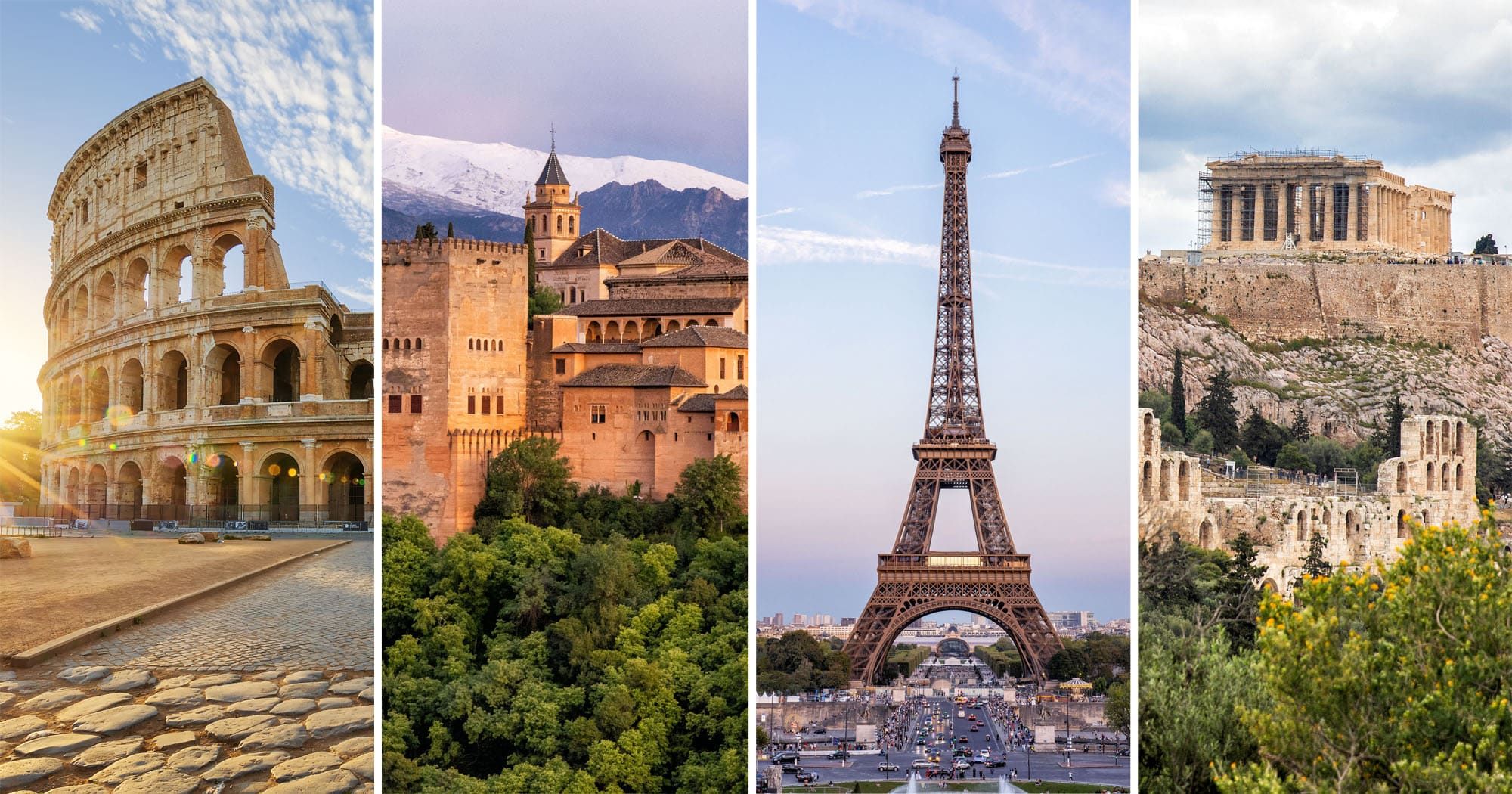
30 Popular Tourist Attractions in Europe & How to Visit Them
From world class museums and ancient archaeological sites to stunning natural wonders, Europe boasts a diverse array of attractions that attract millions of visitors every year. Here are 30 of the most popular tourist attractions in Europe and how to visit them.
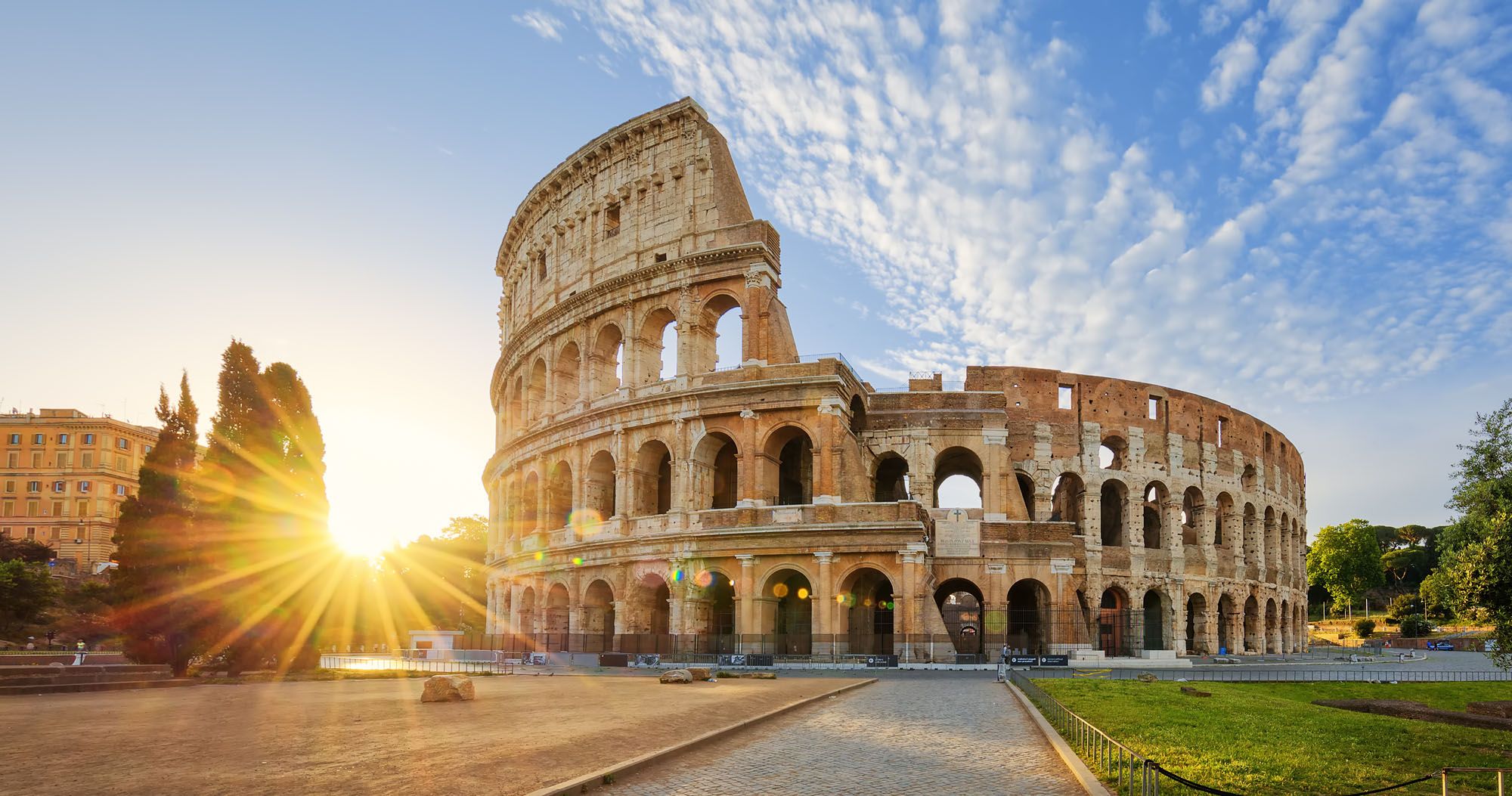
One Week in Europe: 25 Epic Itineraries
Do you dream of visiting world-class cities like Paris, Barcelona, or Venice? Or would you rather hike the Alps, go on a scenic train ride, explore the beautiful beaches and coastal towns in southern Europe, visit fairytale towns and castles, island hop in Greece, or go on an unforgettable road trip in northern Europe?
In this article we list 25 ways to spend one week in Europe.
10 Days in Europe: 10 Amazing Itineraries for Your Next Trip
Europe is a joy to explore. With world-class cities, medieval towns, historical sites, the snowcapped Alps, gorgeous beaches, and some of the world’s most delicious food, you have the perfect ingredients for your next vacation. If you want to spend 10 days in Europe, we have ten amazing itineraries to share with you. In this […]
15 Things You Should Know about Renting a Car in Europe
Having a car provides a lot of freedom and convenience when traveling through Europe. You can travel at your own pace, stop frequently to take in the view, and get to some places that are difficult to reach with public transportation. However, there are some things to know about renting a car in Europe. Knowing […]
30 Beautiful Places to Visit in Europe (+ Map and Photos)
It is no secret that Europe is filled with beautiful places to visit. With its grand cities, fairytale-like towns, soaring mountain ranges, and gorgeous beaches, there is a seemingly endless list of gorgeous places to explore. Whether you are planning your next trip to Europe, or just trying to figure out where to travel to […]
7 Things to Know When Planning Your First Trip to Europe
If you are planning your first trip to Europe, it can be an overwhelming experience. Where should you go? How much will it cost? How many places can you visit? Does this sound familiar? We get emails every day from people who want advice planning their first trip to Europe. And we see the same […]
Best Hikes in Europe: Our 20 Favorite Day Hikes
Europe is one of our favorite places to go hiking. There’s no better way to explore the dramatic and varied landscapes here, from the snow-capped Alps to coastal trails to the remote, volcanic interior of Iceland. In this guide we list 20 of the best hikes in Europe, 20 amazing ways to explore this beautiful […]
Travel Photography Gear Guide: What’s In Our Camera Bag
Do you want to know how we capture the images that you see on our website? Here is our photography gear guide, with links and explanations of our photography gear and accessories. At the end of this post, we offer tips and tricks on how to take better photographs while traveling. Photography Gear Guide The […]
